Story: Outta Range on the Old Ghost Road - Presented by Bosch Pt. 1
Whilst on a road trip in the South Island, we thought we’d head over to tackle the iconic Old Ghost Road. But we decided we’d try and ride it a little differently – instead of staying a few nights in a hut, we’d try and nail the trail in one day on eMTB’s – should be easy right?! Cameron Mackenzie (our handy photographer) would be using a loan Trek Rail eMTB and I’d be on a new Cannondale Moterra eMTB, which was under review.
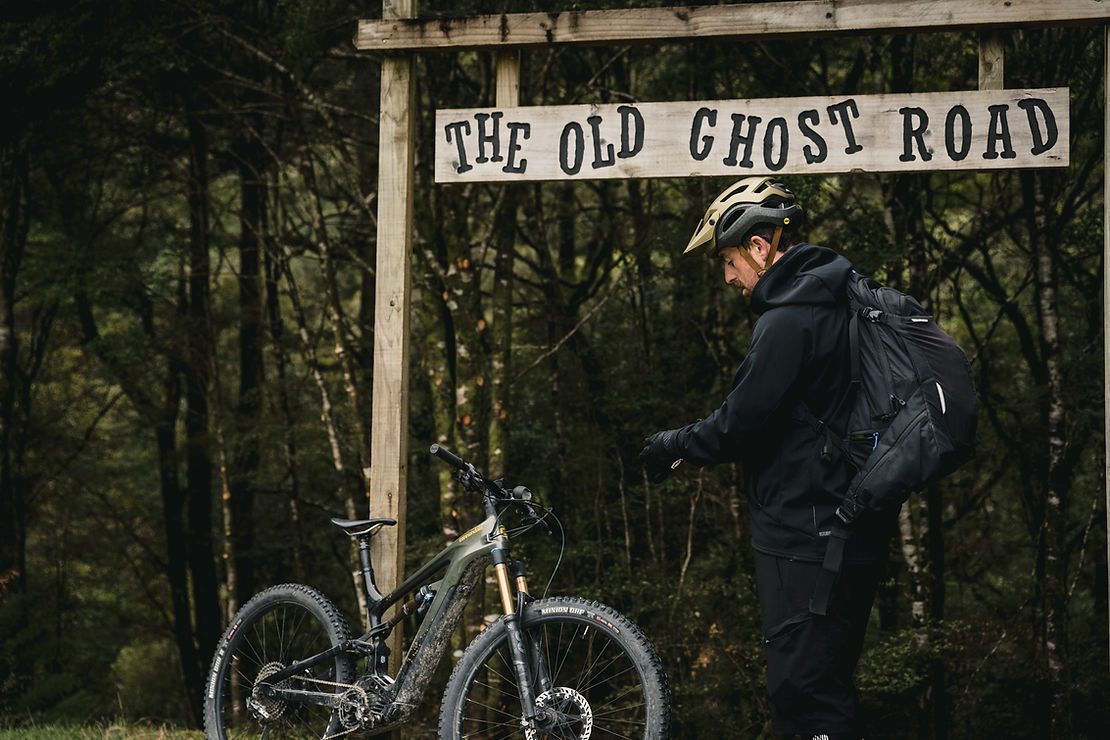
With the launch of the new Bosch Performance CX motor, Cannondale completely redesigned the Moterra for 2020, to accommodate the new system. The pedalling position on the Cannondale Moterra 1 is central, upright and very comfortable. The slack seat tube angle positions the rider far over the rear wheel on steep climbs, unweighting the front tyre and sagging into the rear travel. However, the front wheel remains on the ground the moment you shift your weight forward slightly, though it isn’t very precise in tight turns. Thanks to the traction offered by the rear wheel and the excellent eMTB mode of the Bosch motor, the Cannondale Moterra 1 makes easy work of steep climbs. Going downhill, you feel like you’re sitting in the Cannondale Moterra 1 rather than on top of it. The Moterra 1 instils you with confidence on the descents, which is only amplified by the MAGURA MT7 brakes. The Moterra 1 handles with predictable precision. Once you’ve decided where you want to go, it will hold its line no matter how imperfect your posture or riding technique. The FOX suspension absorbs all the bumps, though it could offer the rider a little more feedback from the trail. More playful riders will want a little more support from the suspension, to pop off roots and ledges, but above all the Moterra 1 feels stable.
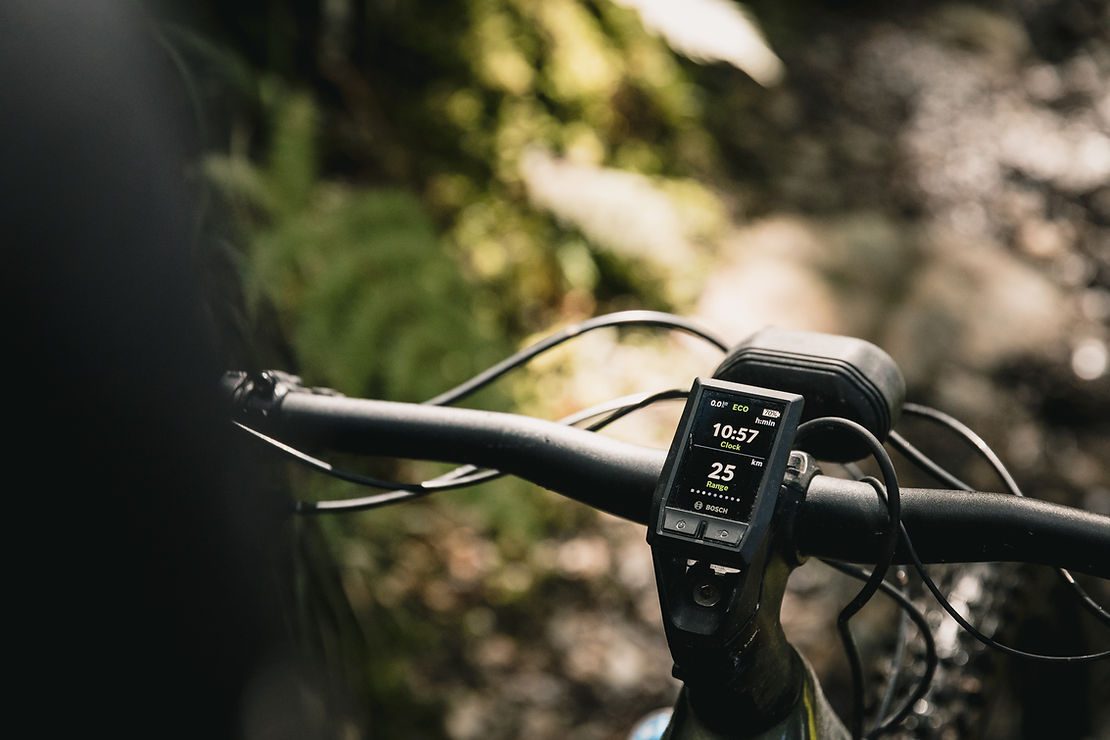
Our base was the West Coast coal-mining settlement of Seddonville, 50km north of Westport, named in honour of the legendary Liberal Premier, Richard Seddon. It was also the site of an early experiment in state socialism – New Zealand’s first state-owned coal mine opened there in 1903. Seddonville is in the isolated north of the West Coast in the foothills of the Glasgow Range, on the southern bank of the Mokihinui River. Seddonville isn’t the easiest place to get to, as with most of the West Coast of the South Island. The coast is isolated for a reason and that’s the gem of the region - it’s almost stuck in time or at least it feels that way when you’re there.
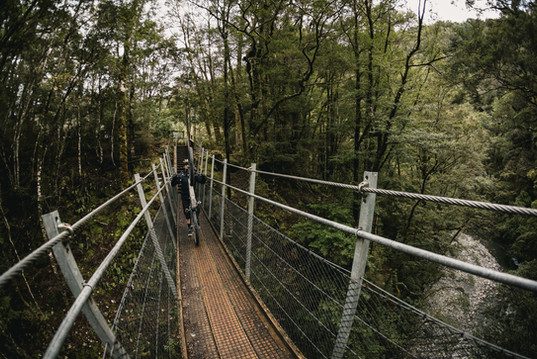
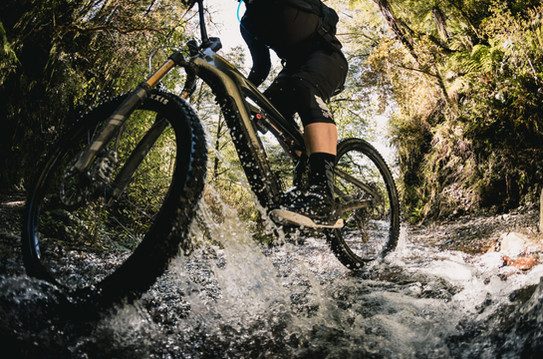
Words: Liam Friary
Images: Cameron Mackenzie
Story: Destination Marlborough Pt. 2 - Presented by Pirelli
To read the full story, subscribe here to NZ Mountain Biker.
To read part 1, click here.
The boat ride the next morning was back to Torea Bay, to complete the track with what looked like an easy sort of effort, only about 19 kilometres.
We knew the day would start with a grunt. The combined tarmac and trail ascent gets riders to 407m, in about 2.5 kilometres. You can peer almost straight down on the jetty where you started. That sort of caper continues for quite a way, and it makes things tough. All that effort was rewarded with a spectacular view from the day’s second high point, and a very exciting switchback descent.
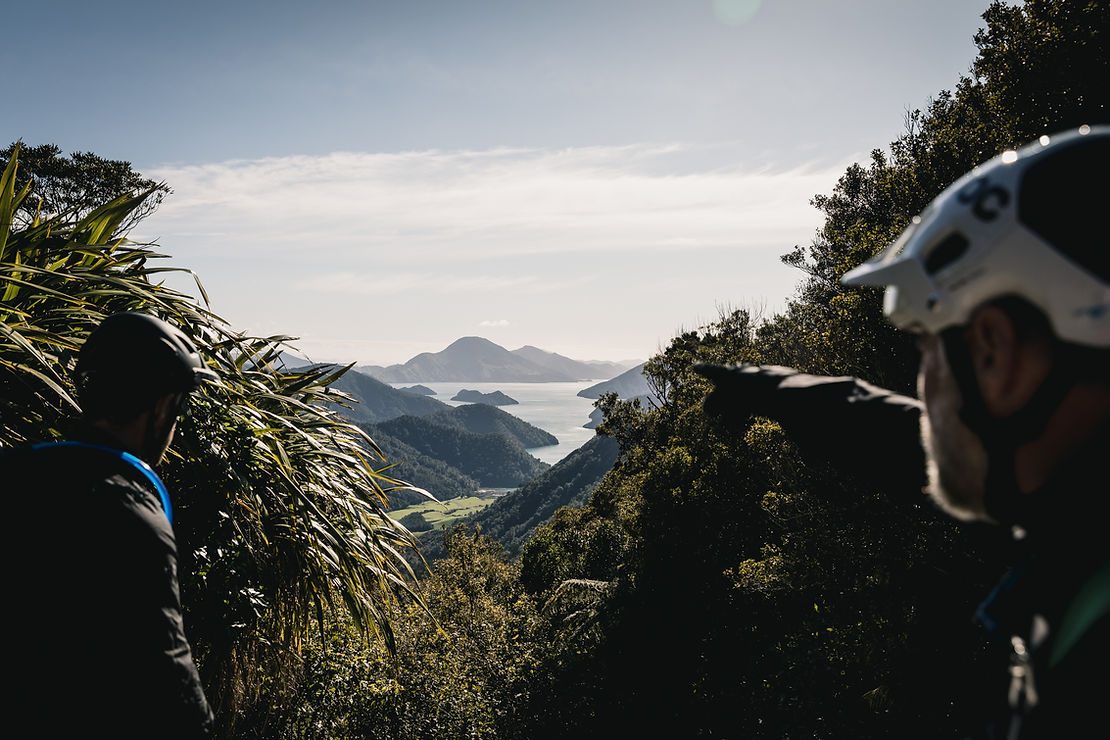
The relatively mellow ride from there to Anakiwa was made more interesting by the clock, we were running late; and by the e-Bike, which for the second day had run low on power. Where the first day’s battery outage was softened by a mostly downhill finish, the run to Anakiwa was rolling trail with plenty of ups. We rode it at the best pace we could muster, and got to a slightly miffed ferry pilot about 20 minutes behind schedule, then had to wait for the unfortunate e-Biker, who sprinted down the jetty five minutes later.
A long discussion over beers at the Oxley ensued – how to recommend the Queen Charlotte to bike riders? Moving on to the excellent (if slightly rustic) Jolly Roger café, the discussion continued at dinner. We reckoned all of it would pay back reasonably fit and able mountain bikers in spades – every section has something to put a smile on your dial.
The gem is definitely Ship Cove to Camp Bay, and that’s the part that is closed to bikes during summer: December 1 to the end of February. The rest of the trail would be fairly brutal on a hot summer day, and you would miss the best part during the height of summer. We reckoned a shoulder season foray would be best.
The last day of our Marlborough adventure was to be an assault on Nydia Bay. This trail has been talked about for decades, and even raced in the NZ Enduro. How I had managed to miss out on it until now is a mystery, but my time had finally come.
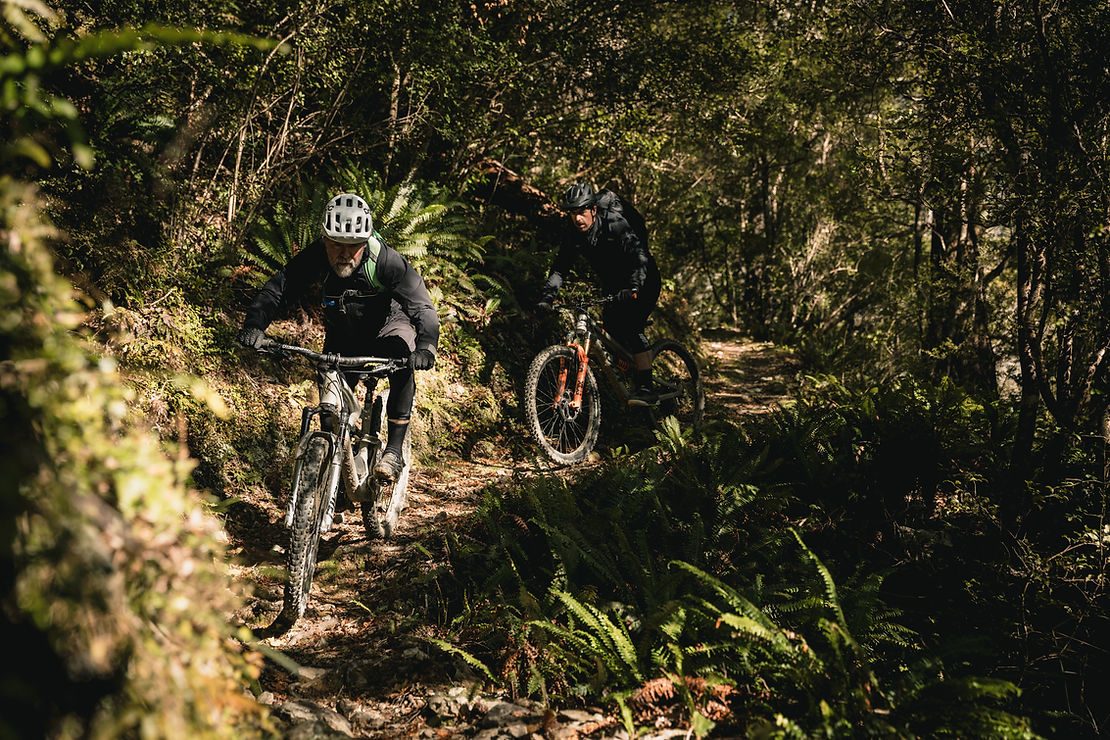
The drive to Havelock behind us, we met up with the very helpful Kelly, from Destination Marlborough, who would drop us at the trailhead then drive around to Kaiuma Bay to retrieve us. That is an aspect of the Nydia Bay ride that needs to be factored in, if you want to take in the entire 27 kilometres in a single serve.
We decided to add in the Opouri Bridle Track, so Kelly delivered us to the Opouri Saddle and we dropped straight into some of the best trail you will find, anywhere. Benched into steep terrain, the Bridle Track drops over 530m in about five kilometres, so it is nearly all downhill but never very steep.
The trail is all rideable, but not by me. The consequences of failing on some sections would not be good, and we were on a day-long mission we wanted to complete intact. Having said that, on the Bridle Track there were only a few spots that needed a quick dab or a dismount, and most of it was ridiculous fun.
The arrival at Duncan Bay, where the road ends, is an anti-climax: the trail pops out directly onto the road, which meanders along the shoreline to a jetty, and the start of the Nydia Bay Track proper.
The trail climbs gently, hugging the coast and offering up views of the water all the way. There were a few root snaggles along the way, but pretty soon the trail tipped upwards and the real fun started.

The Nydia Bay Track is a nicely benched trail on a very climbable grade – but every so often it presents a very interesting challenge. It might be a tangle of roots snaking across the line, and the next little heart-stopper might be a rocky outcrop that has resisted the trail builder. So you tripod over it, or dismount and walk a few paces. Intermittent watercourses traverse the trail, some are dry and can be crashed through, some are running with clear water, are steep sided, and slippery as eels.
From the ridge to the sea at Nydia Bay must be about as much fun as you can have on a mountain bike, as long as you watch where you are going.
It is possible to ride most of the ‘maybe’ bits with the momentum of going downhill on your side, and cackling to yourself while you clatter down a tricky but rideable section unscathed is a rare pleasure. Except when it isn’t rideable. Those bits come along without warning, see above about watching where you are going. Cam would go ahead to scope out photography opportunities, and sometimes station himself so he could catch us as we came along. I saw his head and shoulders over the crown of the trail ahead, and looked at him for a poofteenth of a second too long. Just enough time for my front wheel to drop off the trail, which I got a close look at a split second later. It was a funny crash, no harm done, made funnier by the fact that Cam hadn’t stopped for a photo op, he had also upended himself.
We dropped in to Nydia Bay at the same time as the rain that was forecast, and we were glad to have completed the descent in relatively dry conditions. Pristine forest gave way to scrappy pine forest, with every piece of machinery that has ever come in by boat, then worn out, still laying around. Simple little houses were dotted among the trees, and the trail became muddy and almost swampy in spots.
At Nydia Bay Lodge we pulled off the track to have a look and a bite of lunch. The Lodge managers were in residence, although the Lodge was a month or so from opening for summer. They were keen for a chat, and brewed us a coffee which was a welcome treat. We sat on the veranda and watched the rain, chewing over the day so far, as well as our sandwiches. We reckoned anybody who relished riding a difficult trail would love Nydia Bay track, but anybody at all would enjoy walking in for a stay at the lodge, and the walk back out out again the same way.
An out-and-back bike ride would also be a goer, with a bit more hike-a-bike on the return trip, but an easier descent to finish, and no need for a shuttle.
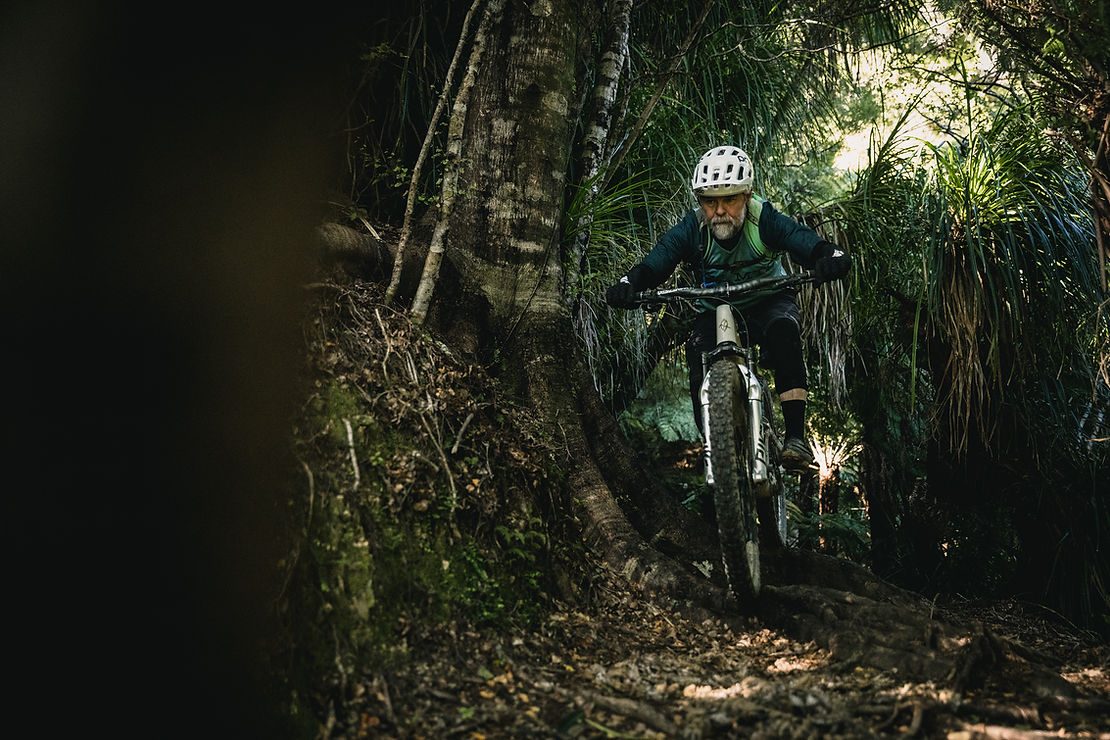
For us though, we were heading up another climb, now in a howling gale and sideways rain. The climb through farmland and up to Kaiuma Saddle is actually higher than Nydia by a few metres, but it’s a lot less difficult. So is the descent – it is not easy, but it’s not as gnarly as Nydia, even in the rain. That weird transition from native forest to plantation pine always amazes. The trail surface changed from weather beaten rock and tree roots to cushioned orange pine needles, and we dropped the final few kilometres into a valley and across a stream before a last fairly brutal climb.
The last downhill was wide open, an easy run down to the Kaiuma Bay road and Kelly in a waiting car, complete with a change of clothes and warm dry interior. Havelock put on hors d’oeuvres at the Mussel Pot - another excellent dinner at the Captain’s Daughter, and the bike trip was done.
We were all pretty pasted by this time. Over 100kms of unfamiliar trails, saving the toughest for last, and a solid 4000m of climbing, made for three long but incredibly rewarding days.
Marlborough had turned on a varied and top quality selection of mountain biking, and Picton had become a new favourite New Zealand town. The top of the south has a heap more trails to offer, and we were all thinking about the next visit before we had even departed.
Words: Gary Sullivan
Images: Cameron Mackenzie
Build Series: Ibis Mojo x SRAM AXS Pt. 3
This is a review of the bike, so I will not rant on about this set-up, except to say that once I got used to it I stopped thinking about it. I didn’t change anything except the seat height - the frame size was large, so I am lucky my shorter-than-average legs were able to reach the drivetrain with the seat post at its lowest position. In fact, it was the perfect height, and the extra length provided by the bigger frame size meant my longer-than-average torso felt about right on it. The tall head tube put the bars at a higher relative position than what I am used to, and that took a short while to get used to.
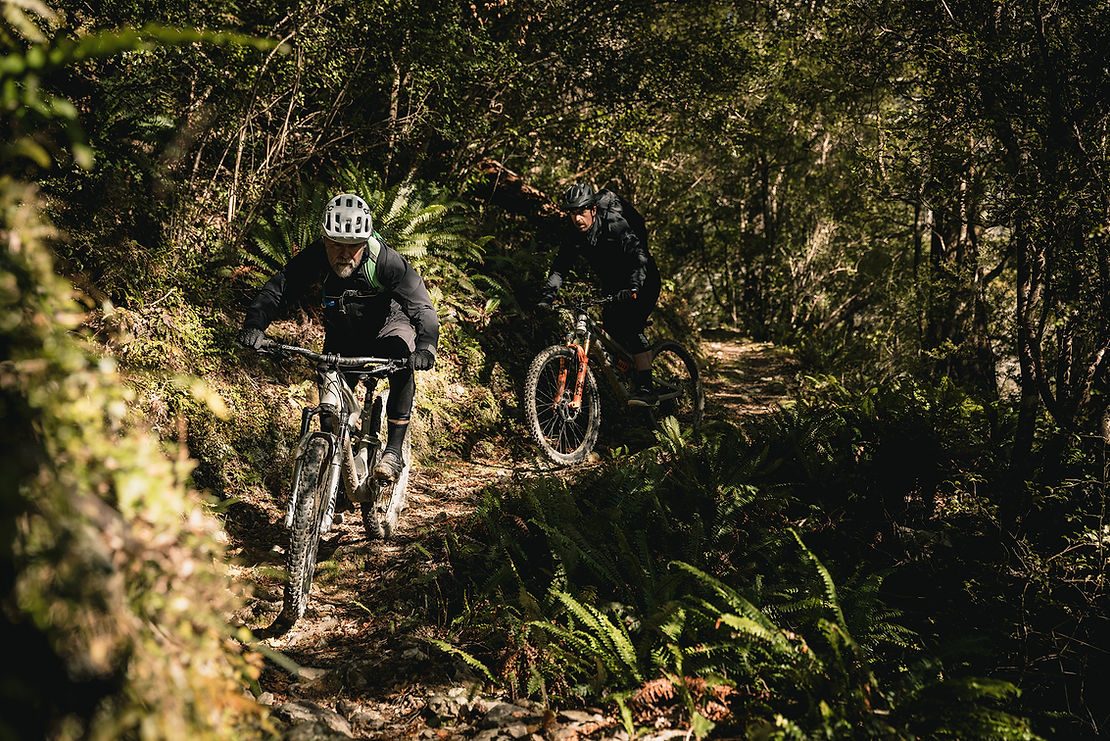
By halfway up the first climb, I felt right at home. The climbs we tackled later in the day were much worse - long sections of both our Queen Charlotte days ran right along the top of a ridge, and some sections were stupidly steep. The Ibis ate this stuff up. When I got off and walked the bike it wasn’t because the bike was not up to the task.
The bike has a 76.6-degree seat tube, which puts the rider in a good position over the bike for climbing - scooch forward on the saddle and the front end will stay planted until you run out of gears (or willpower). Heading back down towards sea level, the bike immediately felt very comfortable. The head angle of 65.4 degrees keeps everything calm and predictable. The DW-Link rear end works with what Ibis call ‘Traction Tuned Suspension’. The best way I can describe the ride is floating, like a hovercraft. It felt bottomless, and definitely as though there was more to the travel than 130mm.
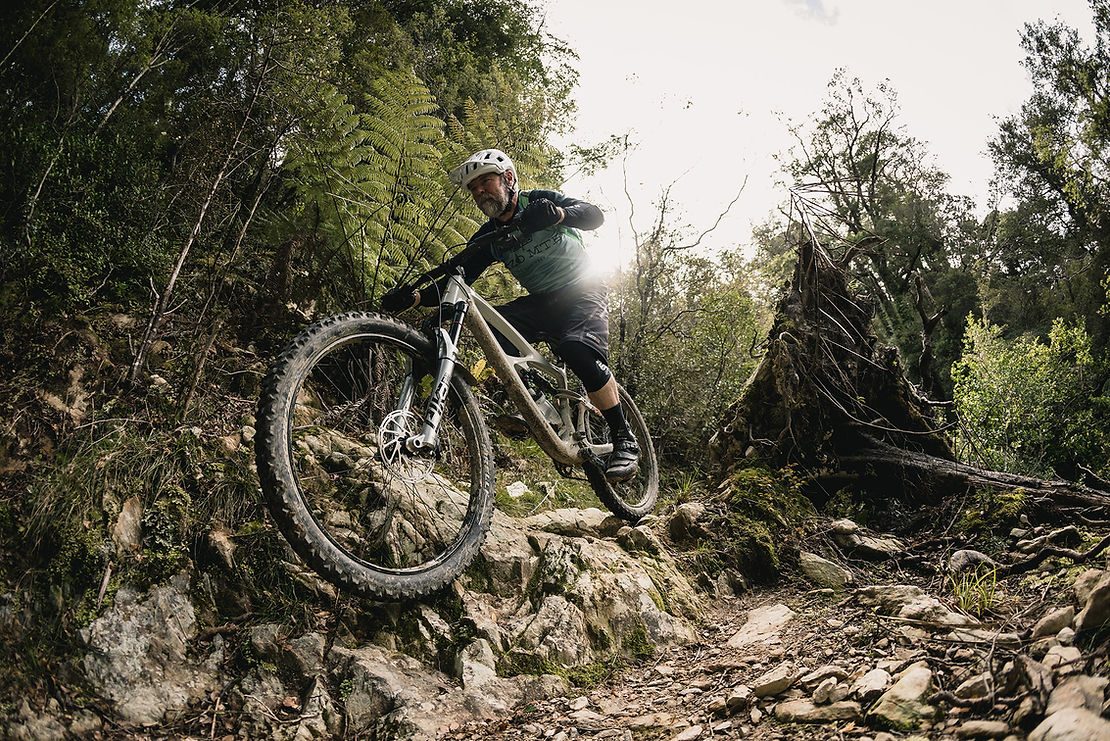
One aspect of the bike that I thought about before saddling up was the wheel size - I had done three years on a 29er, and the conventional wisdom states that the bigger wheels roll over stuff better, provide more traction and allow more wiggle room in uncharted territory, which is where we were going. I need not have worried - in practice there was nowhere the wheel size felt like a liability, and the slightly smaller hoops may have been more playful, whatever that means. The three days of the test period covered an amazing variety of terrain and trail surfaces, and some of it was downright dangerous. By the time we were on the really challenging stuff, I had complete faith in the Mojo and it never let me down. I aimed it where I wanted to go, and that is where it went.
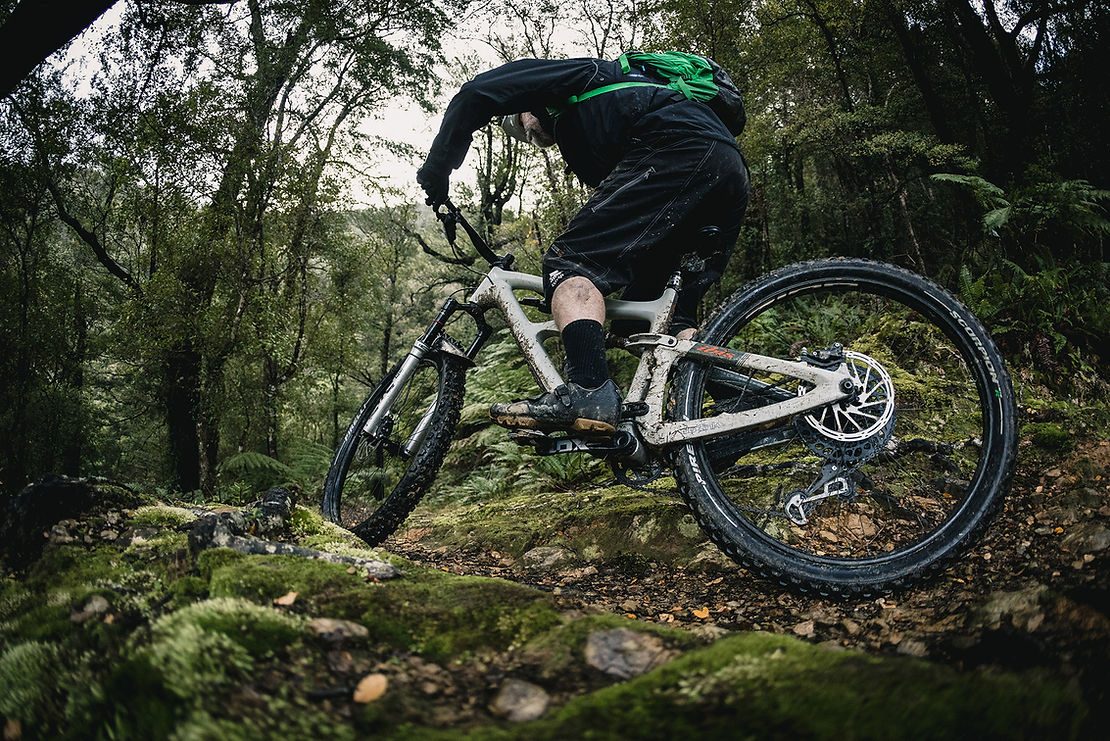
Rider: Liam Friary – I might be the publisher of this here magazine, but I don’t get aboard too many test mountain bikes. My interest was piqued when the Ibis Mojo 4 was touted. I liked that the bike was short travel, 27.5” wheel size (which is what’s on my current bike) and that it screamed playfulness.
I ventured down to Rotorua straight after our trip down south. The extensive trail network would be an ideal testing ground for the Mojo. Immediately, I could feel the bike’s superb pedalling efficiency. I meandered onto some single track climbs and the rig simply ate up anything in its way. The ease of manoeuvrability was also noted. The power I was generating went straight to the pedals - this was helped by the 76.6 seat angle, which put me in a powerful position. I was impressed! But was more impressed about staying on the bike throughout uphill technical sections, which I sometimes struggle with. The rig just ploughed through and kept me moving forward. On the ups, most of the time, I’d leave the FOX DPS rear shock in ‘Trail’ mode and didn’t even think to switch it over to ‘climb’ mode – which pays tribute to the bike’s incredible climbing capability. Especially the V5 DW-link – the thing doesn’t bob. It’s just so damn efficient!
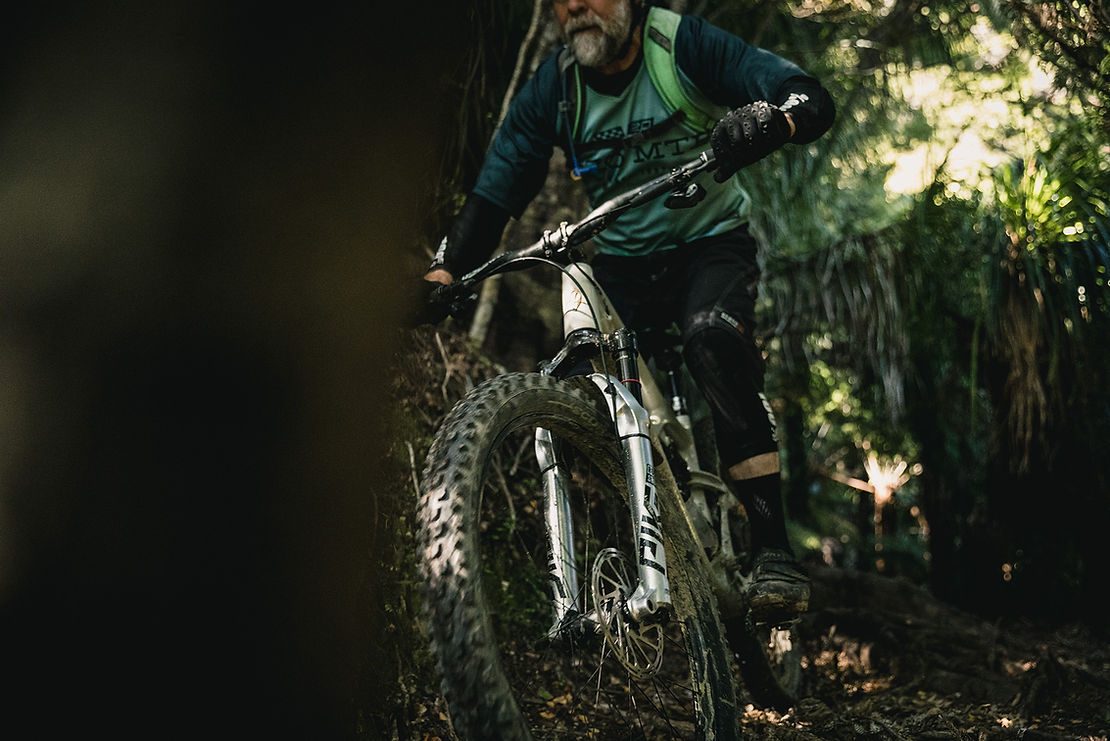
On the downs, the rig’s ability came into its own. It sucks up anything with ease and lets you add flair on the trail without making you pay for it. Again, on the super technical trails, I sometimes struggle but this rig ate em’ all up and kept me upright. I was fooled into thinking I was a better rider than I actually am. The bike’s capability far exceeds the 130mm travel that it has. It’s predictable at speed, stable, and keeps you on course – point it where you want it to go, and it will go! The short chainstays got me in and outta’ turns super quickly – it feels snappy. It’s lively, light, nimble and offers a ton of confidence with its superb traction. It sticks you to the ground and ramps up quickly, avoiding harsh bottoming out. I for one have been super impressed with this bike and, after the awesome time spent riding it in Rotorua, won’t be giving it back anytime soon.
Words: Gary Sullivan & Liam Friary
Images: Cameron Mackenzie
Story: Destination Marlborough Pt. 1 - Presented by Pirelli
To read the full story, subscribe here to NZ Mountain Biker.
Picton is a town most people like passing through. As the ferry terminal for the South Island, travel in either direction involves Picton. If you’re a lucky Northerner arriving in the South Island, it’s a sort of welcome sign that flashes past as soon as you hit the road out. You might spend a couple of hours there on the way back, but if you’re anything like us you will be exhausted and in a kind of funk about having to head back to normality.
Located at the head of Queen Charlotte Sound, the town is small enough to feel crowded into the water by the surrounding bush, but large enough to support a great variety of accommodation, transport, and eating options.
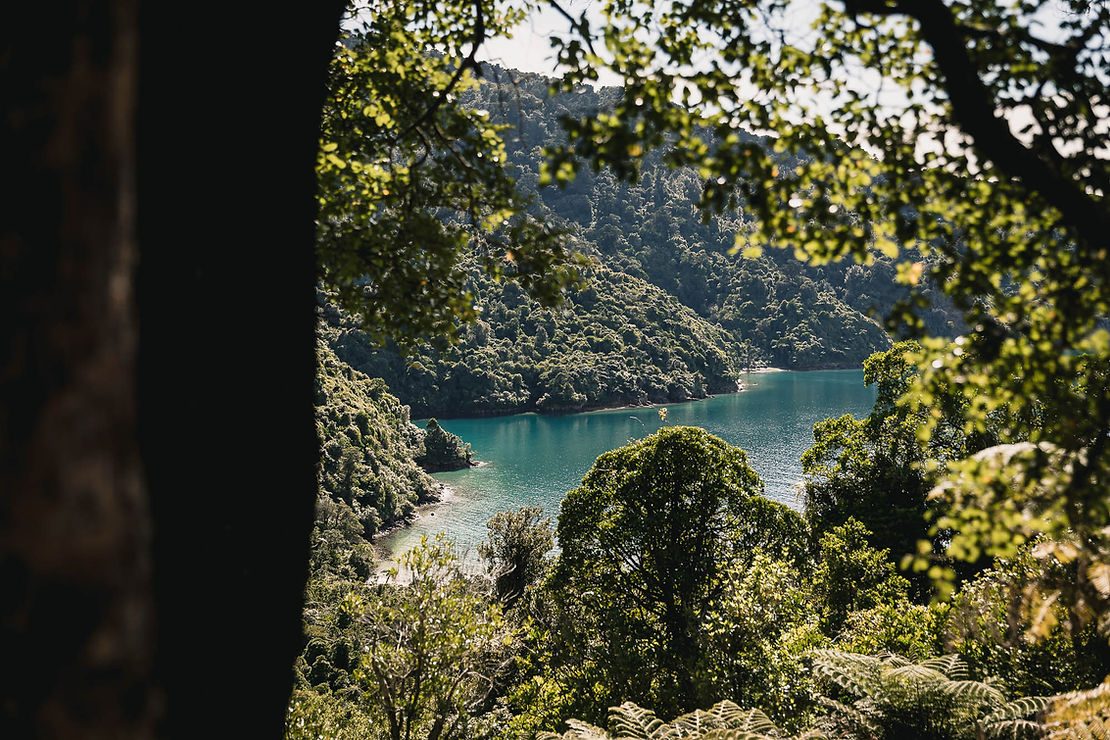
Picton is the traditional hopping-off point for the Queen Charlotte Track. Scratched out of the tough terrain in the early 80s, based on sections of historic trails, the track was opened to walkers in 1983. Keeping a track that is 71 kilometres long in operational condition was beyond the capabilities of the determined people that instigated it, but with the formation of the Department of Conservation in 1987 - and a big effort involving people from DoC and the Air Force - the track was cleared and improved and has been a favourite ever since.
Open to bikes except for a section that closes over the height of summer, the Queen Charlotte was a shoo-in to the National Cycleway project. Unlike many trails developed since, Queen Charlotte was not built for bikes, and that is what makes it so unique as a bike ride.
You travel to the northern start point by boat (it’s the only way to get there), a scenic jaunt from Picton that takes about an hour. You step off the boat in the solitude and spectacle of Ship Cove / Meretoto, the hills ringing with birdsong.
Many people choose to use the other unique feature of Queen Charlotte – a fine selection of accommodation literally en route. Riders can have their gear ferried to many stops along the trail and make the ride last two or three days with no need to be weighed down by baggage. We’d done that on a previous expedition and it was a really good way to do it. Another special feature is that anybody who doesn’t want to ride a section, or in fact any of the trail at all, can go by boat, and be located in a deckchair with a wine and a book by the time the riders come along.
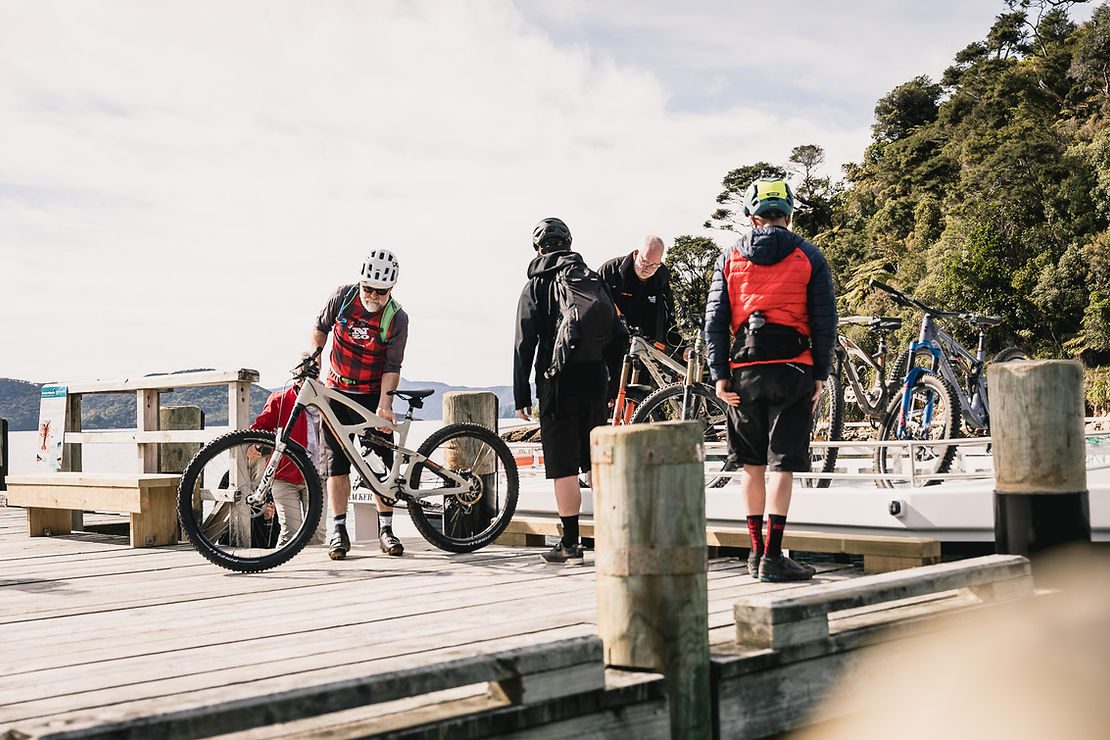
On this outing, we took a different tack, and based ourselves at the Yacht Club for the duration. There are solid arguments in favour of either approach, but the upside of a fixed base is the opportunity to let your kit explode across a room and only have to round it all up again once. As we had two days to do Queen Charlotte, and a third day to ride the legendary Nydia Bay Track, the fixed base won out. The bonus was a couple of extra boat rides, and spectacular dinners in Picton.
Our first day was pegged to be a 51km effort from Ship Cove to Torea Bay. We had breakfast in the hotel, then did the freewheel to the waiting ferry. The boat had a very nice roof-rack with space enough for heaps of bikes, ours as well as some bikes belonging to friends we had along for surprise company – Kylie and Matty were out for a day ride before heading further south. There was space for several more.
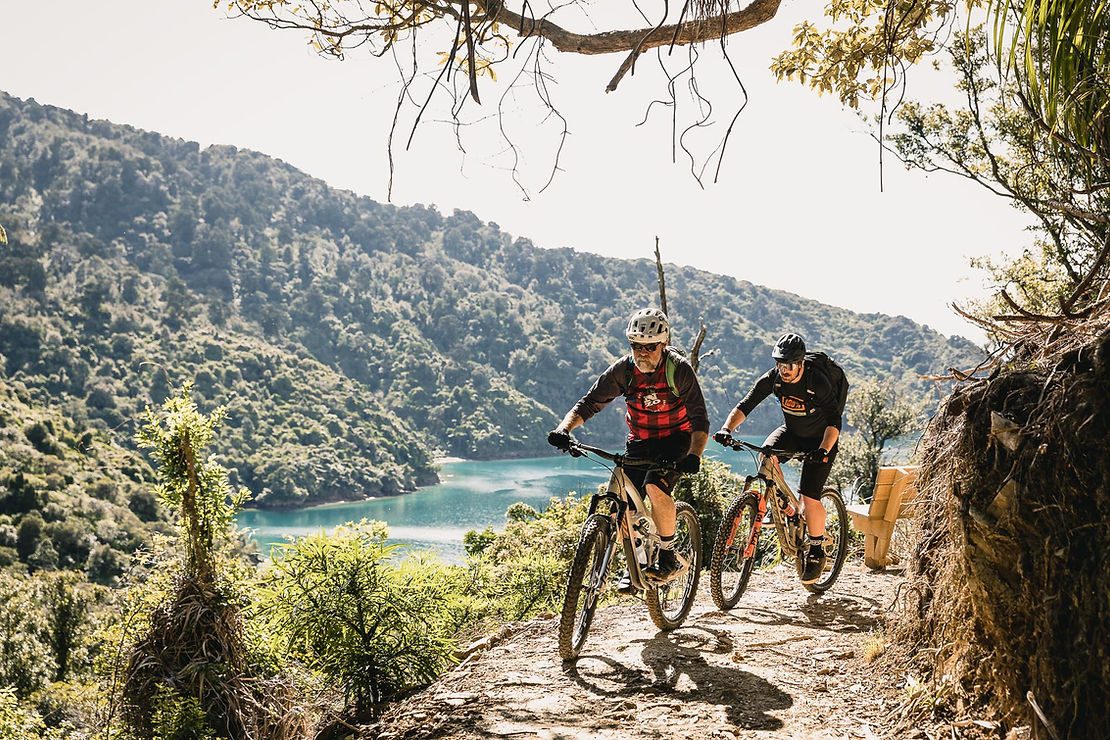
The start of Queen Charlotte Track at Ship Cove is stunning. There is ancient forest, clear water under the jetty, and on this day, a certain trepidation on my part about the first part of the route. On our previous mission, the first climb was very hard. It went straight up, and was almost impossible to ride. To my relief, the track has had some major upgrades, and the new line is a textbook example of how to get to a pretty decent height without too much pain.
The trail switchbacks its way up through the forest before the climb topping out at 237m with a long view toward the rest of the ride. Diving off the saddle there is a really nice section of very fast, wide open trail down almost to sea level in a couple of kilometres, before the climb to the next saddle gets underway. The trail is classic back-country mountain biking.
The Sounds is an amazing place to be – every piece of land seems impossibly steep, and the shore is so convoluted that the Sounds contain 20% of New Zealand’s total coastline. Every high point presents another aspect of that complex geography.
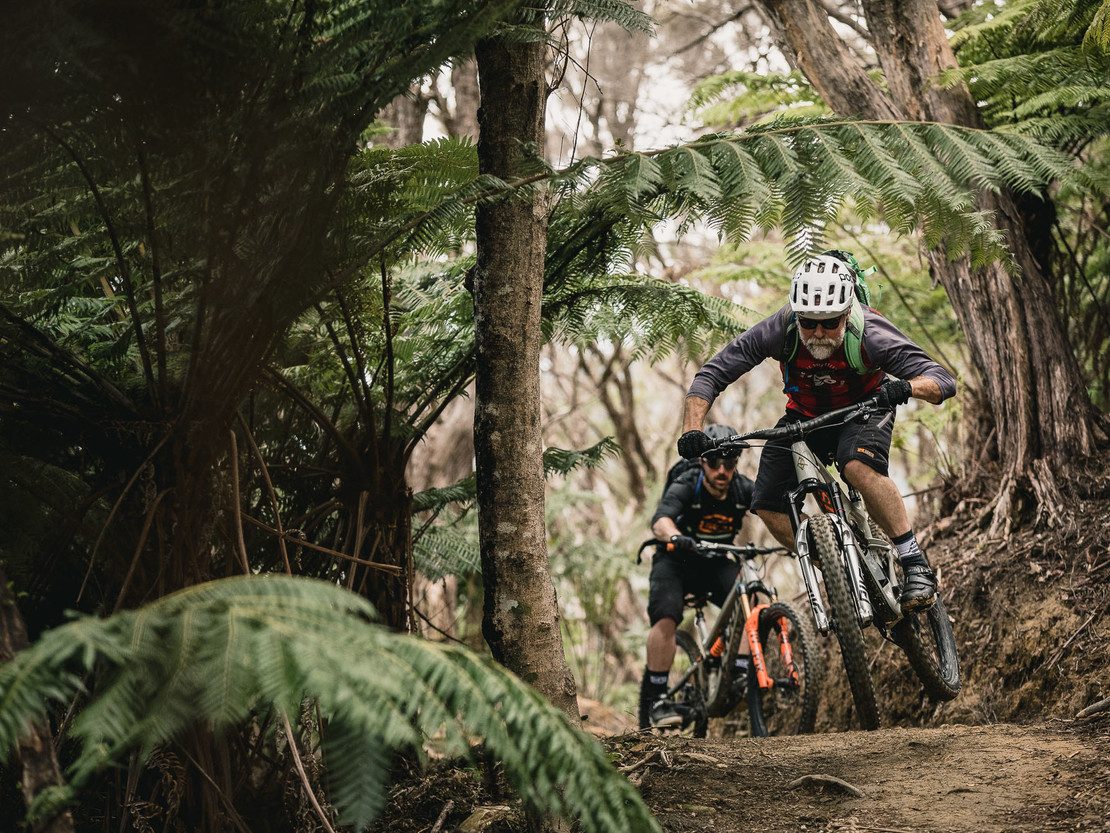
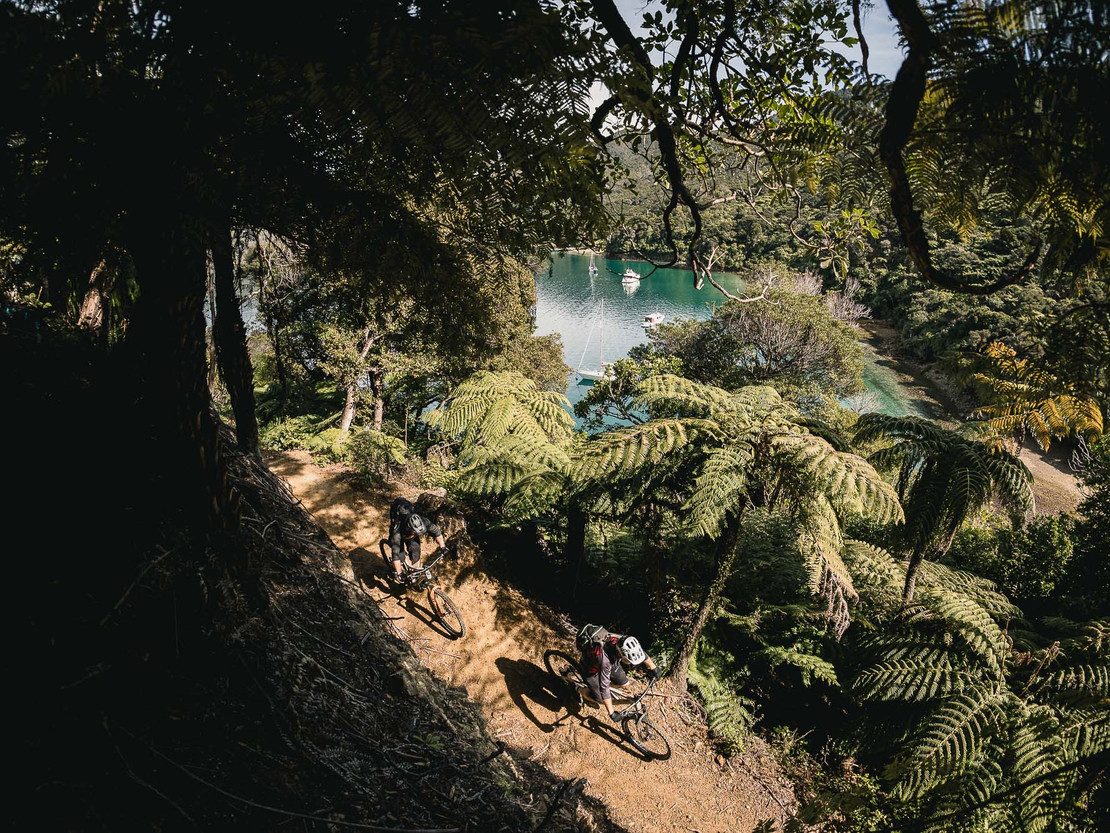

It is after the climb to Kenepuru Saddle that the trail starts to be a grind. Following the ridge gives many opportunities to look out across the Sounds, but it also results in some very steep climbs. Still, among the relentless, almost unrideable ascents, were some neat little sections of downhill. The final descent to Torea Bay, and the surreal experience of rolling on to a jetty where a ferry waited, was a fitting end to the day’s ride.
Words: Gary Sullivan
Images: Cameron Mackenzie
Build Series: Ibis Mojo x SRAM AXS Pt. 2
To read Pt. 1 in this series, click here.
When it comes to wrenching on bikes, it doesn’t get much better than this.
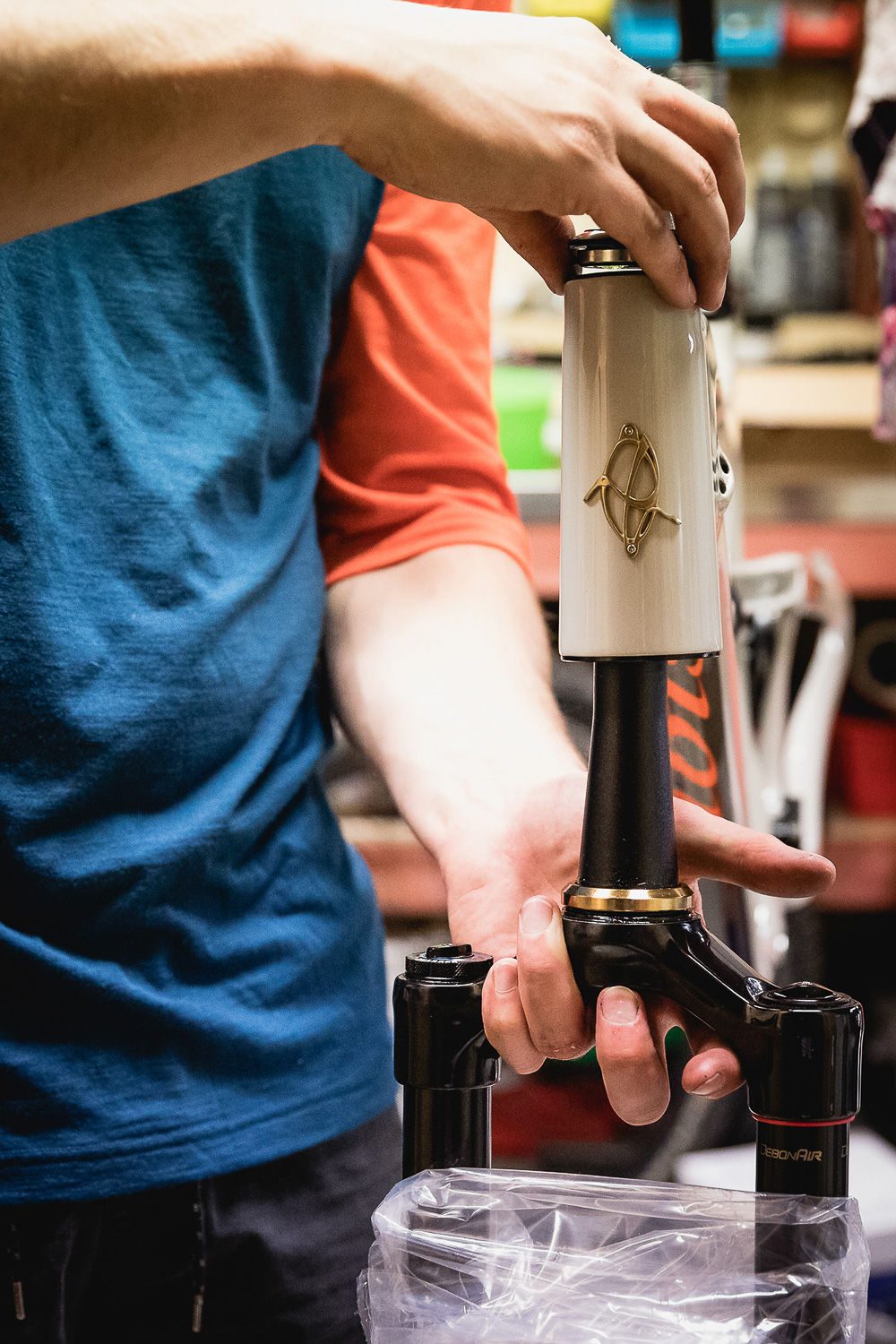
This isn’t the first Ibis I’ve built and it likely won’t be the last - for good reason. The attention to detail on any Ibis frame is second-to-none, and that comes across loud and proud the minute you get a frame or bike in the stand. This translates to an easy, clean build, and this latest creation was no exception.
I almost wish we built this Mojo up with cabled gearing, simply down to the simplicity of cabling the rear derailleur, dropper and brake. All Ibis frames feature internal tubing for the cabling to route through, resulting in rattle-free builds and tool-free assembly; you just route the cable through one end and out it pops at the other.
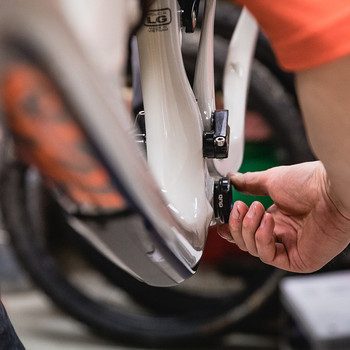
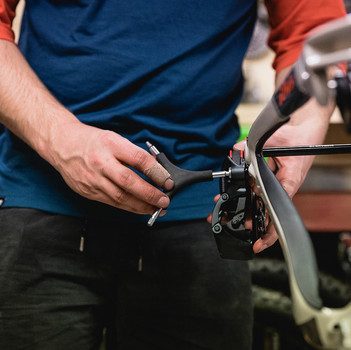
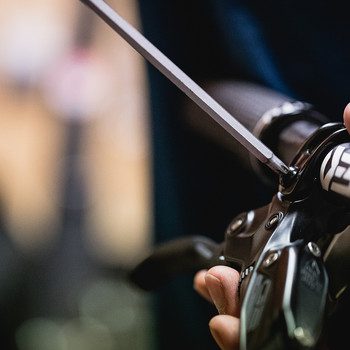
SRAM’s AXS take all the fun out of that process: it’s too easy. I know it sounds like a complaint - it isn’t! - but when a frame is so well crafted, you want to be able to enjoy the experience of assembling it, rather than just attach components via a thread and it be over.
There isn’t any commentary really, other than to say that with good ingredients and good prep, the results yield exactly what you hoped for, without issue.
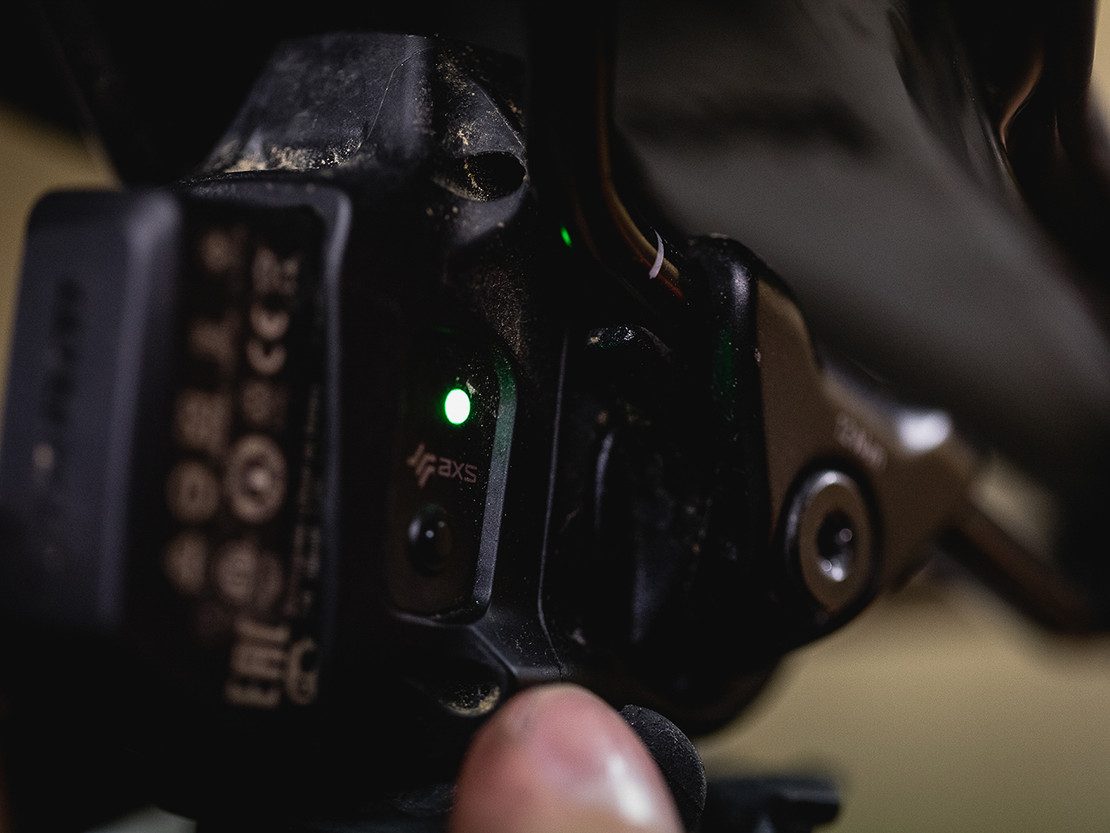
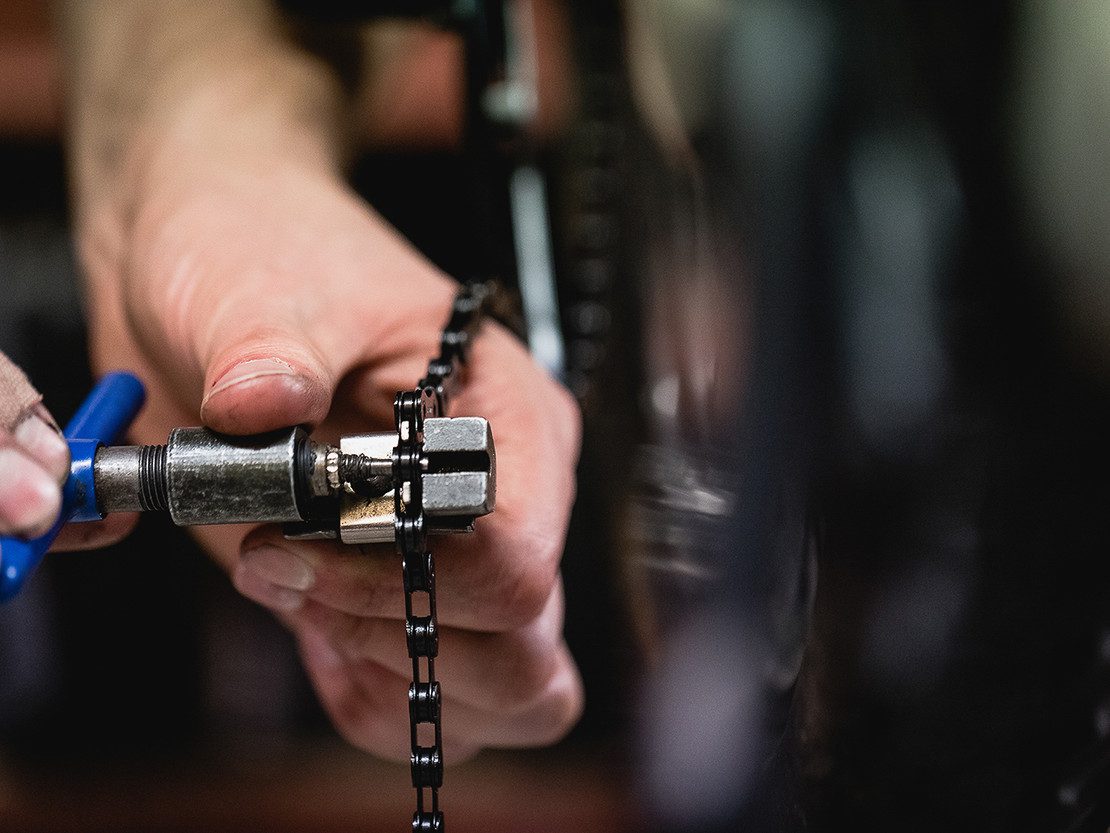

A short travel 27.5” bike with aggressive geometry of this nature seems to be a dying breed, and the mullet build would have helped to increase the lifespan and versatility of the Mojo. It’s not to say that the recommended setup is bad, just that things could be done differently, for better or worse. It was something I’d pushed for, but brand constraints meant we’d need to keep things clean shaven.
I’m sure this won’t be the last time we work with the Mojo. The mullet seed has been sown, so let’s see what comes of that in future issues.
To read the full story, subscribe to NZ Mountain Biker Magazine here.
Words & Images: Cameron Mackenzie
Build Series: Ibis Mojo x SRAM AXS Pt. 1
Well, we’re bloody stoked to bring you another edition of the build series. We’ve been hustling with brands in between riding trips, writing assignments, print deadlines and the rest. This time, we’ve got the new Ibis Mojo 4 frameset paired with SRAM’s AXS. Both the frameset and groupset are on point for the current times, however, the frameset is bucking some recent trends, as it is 27.5” - not the commonly seen 29er. But, more on this later… With a few ride trips lined up for the bike once it was complete, we were pretty excited about putting it together and immediately got underway.
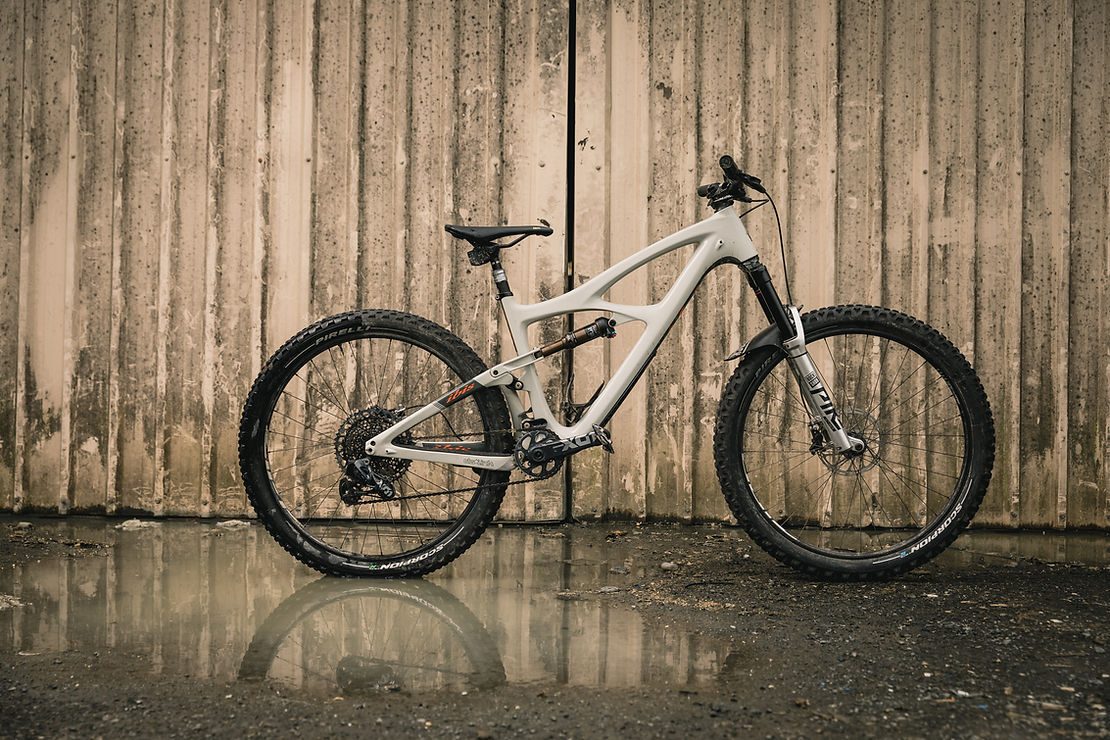
Most of us don’t get to ride exotic locations very often, and I can count the number of times I have done so on somebody else’s exotic bicycle on one digit. Well, three, if we individually count the three days from the recent trip I took to Marlborough Sounds with NZ Mountain Biker. Learning I could join the junket, without needing to lug a bike along, was a huge relief. I have disliked sending my bike over the airport baggage check-in threshold ever since I watched a couple of big fellows off-loading bags from the conveyor belt to their little trailer on the tarmac many years ago. If they had been attempting to explore the performance envelope of the suitcases they were hurling around, they could not have been more comprehensive. If it must be done, package well. If it can be avoided, even better.
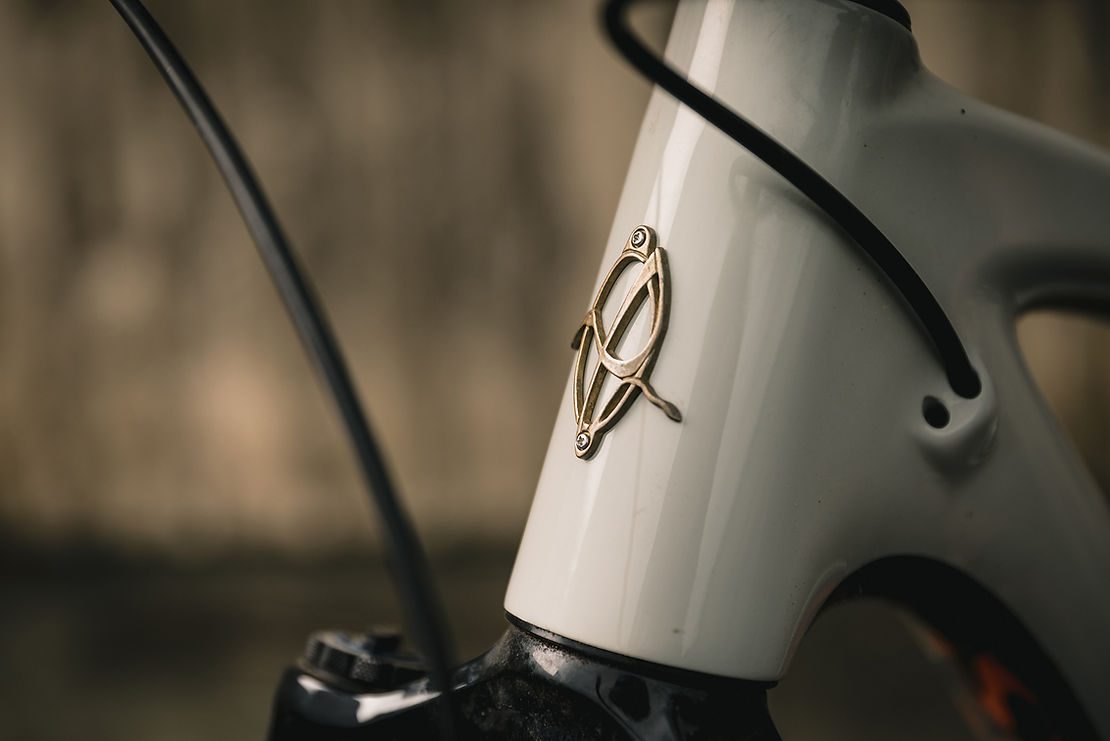
Getting to try the new Ibis Mojo with a deluxe build kit was just one of the things I was looking forward to down south. Ibis is one of the real bedrock brands of mountain biking. While Specialized was working out how to mass-market the new sort, several small operations were making hand-built steel frames and pushing the sport forward. Scot Nicol founded Ibis 38 years ago, after working on hot rodded old Schwinns, then learning at the workbench of Joe Breeze. Scot is one of the company’s owners, and still works at Ibis.
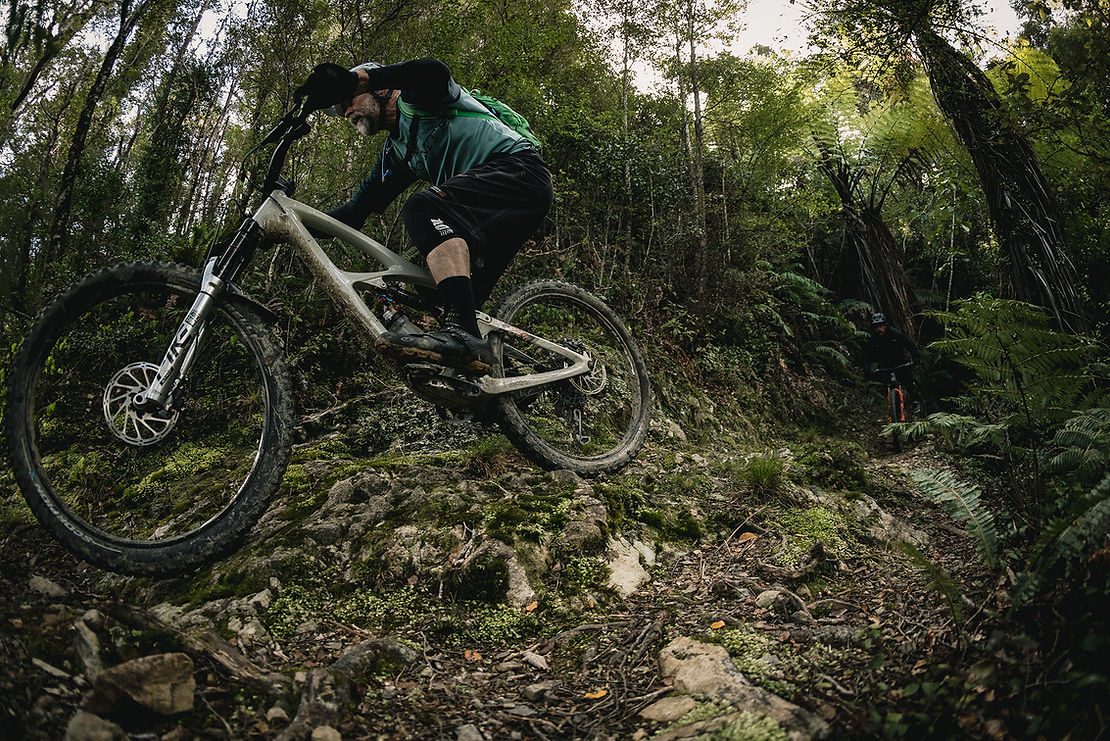
The Ibis Mojo 4 is a mid-travel trail bike with 27.5” wheels. Sporting 130mm of rear end travel, with a 140mm Pike up front, this carbon framed beauty has the Dave Weagle designed DW-Link rear end that allegedly provides all the good things we look for in a suspension platform. It is damped by a Fox Float DPS EVOL. The frame design of the Ibis Mojo is one of the more recognisable shapes around. Created by Ibis partner Roxy Lo, the swoopy look of the Mojo has survived through a half dozen iterations. Roxy Lo was hired as designer from outside the bike industry, and the view she brought to frame design was fresh. It still is – and the process of creating the frame is interesting. Weagle provided the suspension kinematics on paper, and Lo used those fixed points and movement arcs to draw the shapes that became one of the most influential designs of the modern era. The lines remind me of the Schwinn cruisers that became the ‘klunkers’ of early mountain biking, rendered in carbon fibre. There was a Mojo made of steel in the Ibis line-up as far back as 1991, but the first carbon Mojo landed in 2006. New Zealand was one of the first places in the world to see the product - there was an example on display at the ’06 Worlds in Rotorua. At the time, the industry commentators struggled to come up with a tag for a 140mm-travel rocket ship that could go uphill like an XC bike. They settled on “all-mountain”, a new term coined for this very bike. Ibis was not the first to the carbon dually party, but their take on the way a bike can ride - and look - has driven the performance and aesthetic goals of a lot of bikes since the first Mojo arrived.
Words: Gary Sullivan
Images: Cameron Mackenzie
First Ride: Pirelli Scorpion Enduro Tyres
Pirelli is a company with massive involvement in just about every competition that involves tyres. The Italian brand makes the only tyre used in F1 and Superbike, and supplies teams competing in WRC rallies, MotoCross, and over 350 other competitions world-wide.
With a pedigree that also includes a history as the top quality maker of racing tyres for roadies, Pirelli re-entered the cycle sport world in 2017. Starting with road race tyres, the company now has a big range of mountain bike tyres, with XC and Trail already in the bag, Enduro ready to go, and Downhill coming in 2021.
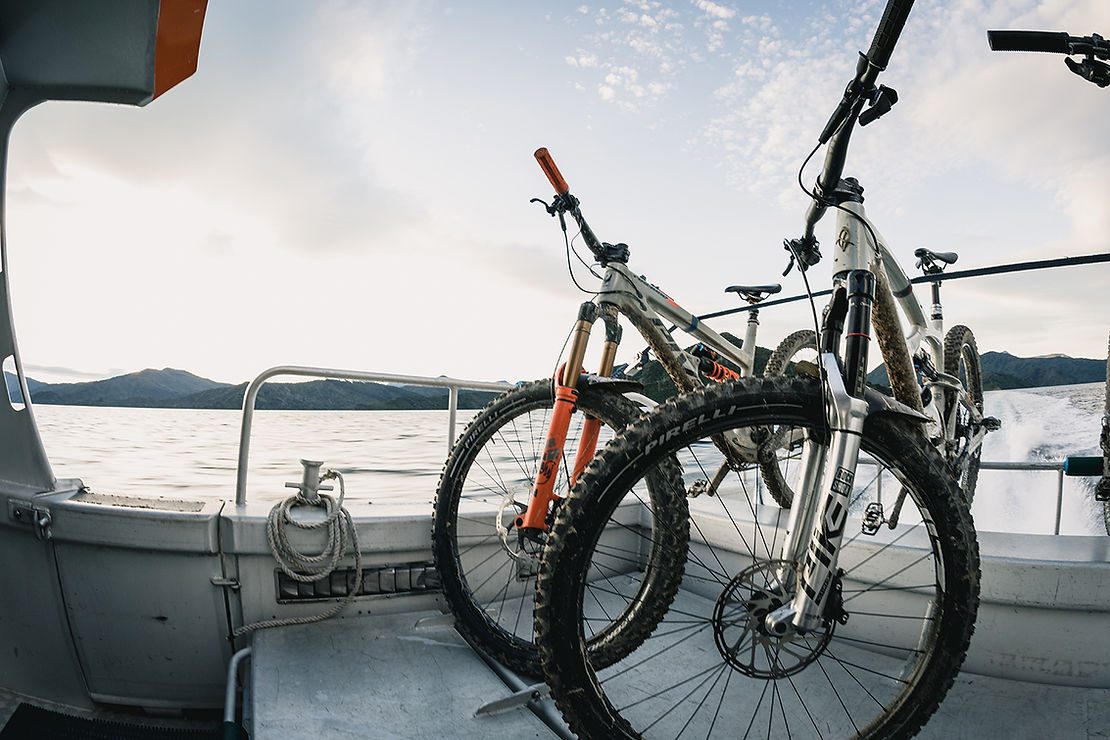
A factor that sets Pirelli apart, is their method of product development. Over 2000 people are employed in R&D, and the way they are organised is interesting. The departments working in the different facets of tyre development, work on that aspect of the entire Pirelli range - for example, the chemistry of the rubber on a tyre designed for mountain biking draws on the knowledge of a team who share data from the chemistry used in every application the company works on. In developing their bike tyres, the designers were not constrained by cost, because compared to a car tyre the materials used makes up a smaller part of the overall cost of the product. The design teams could go all out in perfecting their products, and the way the mountain bike tyres are designed is a testament to that approach.
The challenges in creating a mountain bike tyre are generally met with compromise. Light weight is set against durability, and so is the grip factor of the rubber used. Knobs must be tall enough to do their job for the category they are aimed at, and strong enough to resist tearing off or wearing down too fast.
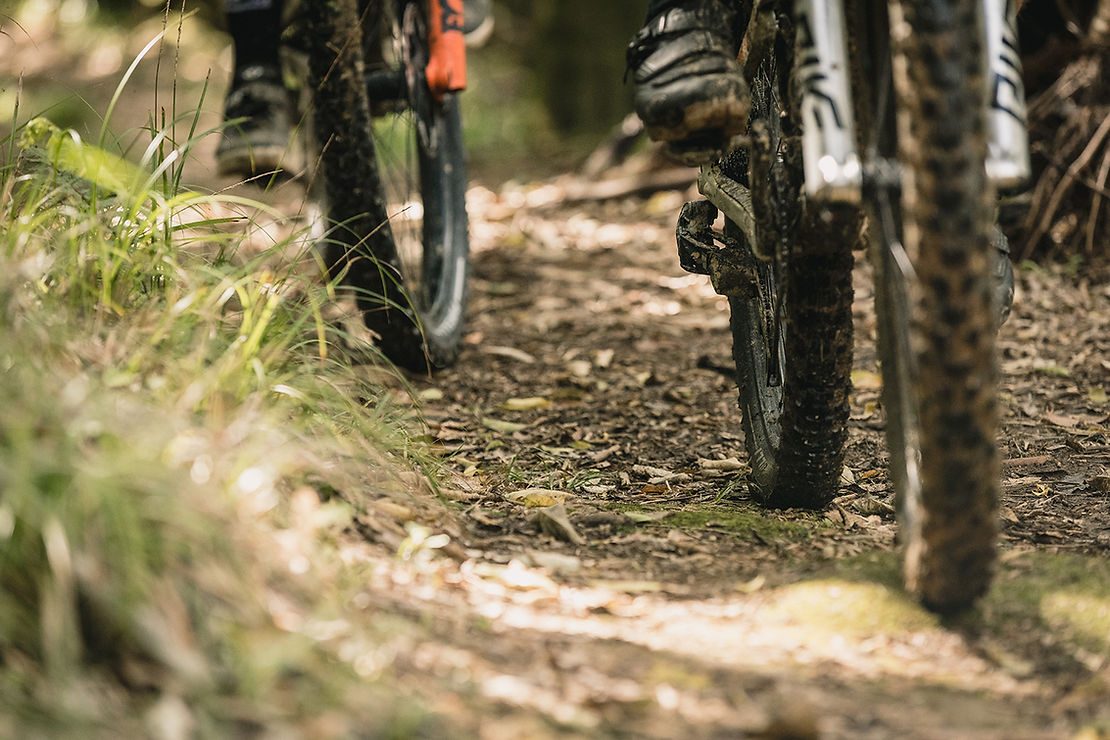
Some companies build a tyre using a hard, strong rubber, coated with a layer of softer compound for maximum adhesion. That results in a tyre that will perform well when new, but once that soft compound is gone the tyre is less than ideal. Other companies push that compromise onto the consumer (that is us). They offer a variety of compounds and leave us to decide whether we want grip or durability. Pirelli use the deep knowledge they have of chemistry to produce rubber compounds which are structurally strong, have optimal surface grip, and will retain the grip performance as the tyre wears.
Pirelli mountain bike tyres are organised in the same way across the entire range - with a letter and colour code to describe their intended application, following the logic used in Motocross:
H in Red means hardpack - small low knobs, designed for speed in the dry.
M in Yellow means mixed terrain - a bit more open, and some more depth to the tread pattern.
S in Blue is designed for soft conditions - a loose surface, or wet conditions, tyre.
R in Green is a rear specific tyre.
There are XC, Trail, Enduro and e-Bike ranges in the usual variety of sizes.
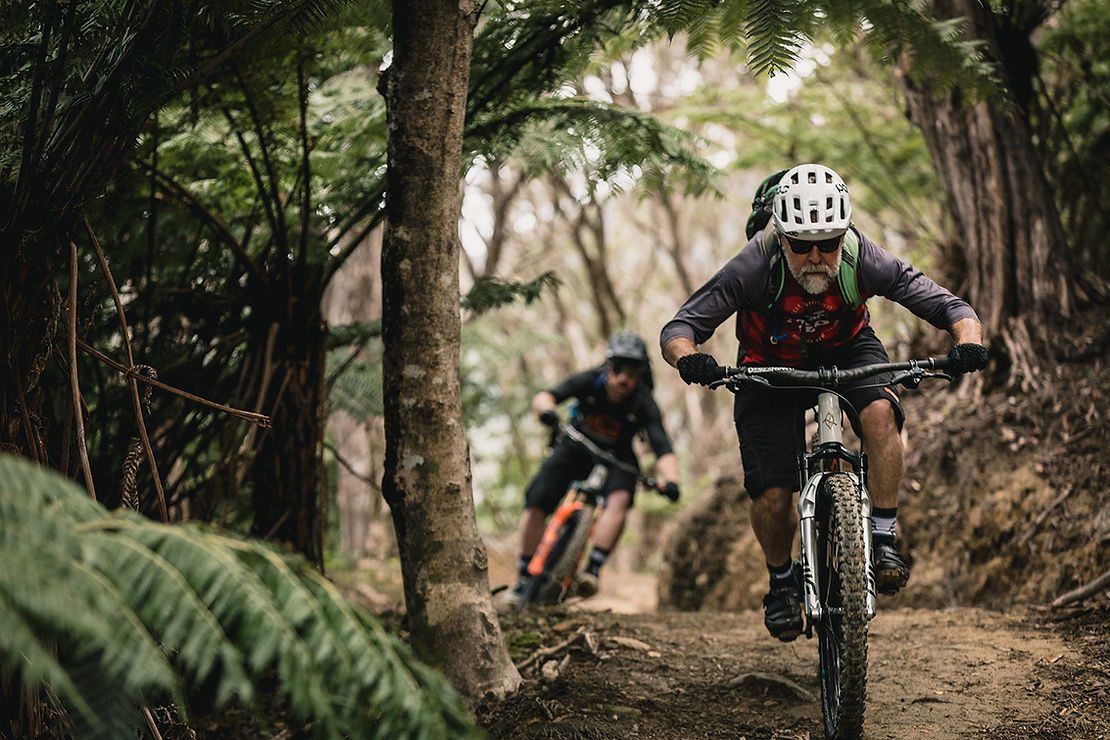
The first pair I got to sample were from the upcoming Enduro range, mounted on my Trek Fuel EX, a 29er. At 2.6” width, with very solid sidewalls, they are not lightweights, with a heft of 1140g per tyre. The front tyre was the S model, designed for loose conditions, with a very open tread pattern. The rear tyre (with a Green R!) has a mostly rectangular block tread pattern, with alternating wide and narrower blocks down the centre and two rows of very widely spaced knobs on the edges. The knobs on the outside edge are sculpted with several levels and notches, as well as small grooves across the face of all the knobs. Tubeless setup was fairly easy, they were a snug fit but once mounted they beaded quickly.
My first ride was on the day after a spell of rain, so I went looking for slippery roots and wet dirt. Initial impressions were based on the view over the bars: the Pirellis have a very round shouldered profile. They rolled better than I expected, and they didn’t seem to take any more effort than what I was used to on our way to the jungle at the top of the forest. The tyres had 23psi when we rolled out of Ride Central, and on the squeeze test they felt way too hard. I didn’t adjust them until we got to the top of the climb, where I dropped them to about 20psi – but they still felt over-inflated to the thumb. We took a lap down Tihi-O-Tawa in the native forest - a fairly natural trail of just over a kilometre, which drops 140 metres over that distance. It feels like half the trail is off-camber roots, and the best way to tackle them is to stay high. When the roots are wet and your rubber is carrying some mud, that isn’t always easy. I was happily surprised by the way the Pirellis handled things. The front end didn’t flinch, the bike heading straight where I pointed it. Any deviation was my fault. By halfway down I was feeling pretty confident, and the biggest root tangle was successfully navigated, delivering me to the small shelf I was hoping to get to, avoiding a slither into the quagmire that is the low-line on the trail. I ducked out of the trail and headed back up the hill, to take a run through the glorious Tuhoto Ariki, three kilometres or so of similar country, with a decent climb in the middle. The climb has a few sections that require your rubber to provide a firm grasp of the planet. Once again, no worries at all. I couldn’t get the rear tyre to let go.
Read Part 2 here.
Pirelli Store Locater is here
Words: Gary Sullivan
Images: Cameron Mackenzie
Trail Builder: Power of One
What started as a one-woman initiative six years ago has gained a life of its own in the form of recent Trail Fund recipient, Raglan Mountain Biking Club – a 60-strong crew that’s since developed its own local network.
“I’m not saying it was easy,” says club treasurer Dirk De Ruysscher, who has been involved since the beginning. “It was definitely a long process, but we’ve gotten to the point where we have some local options and we plan to continue growing.”
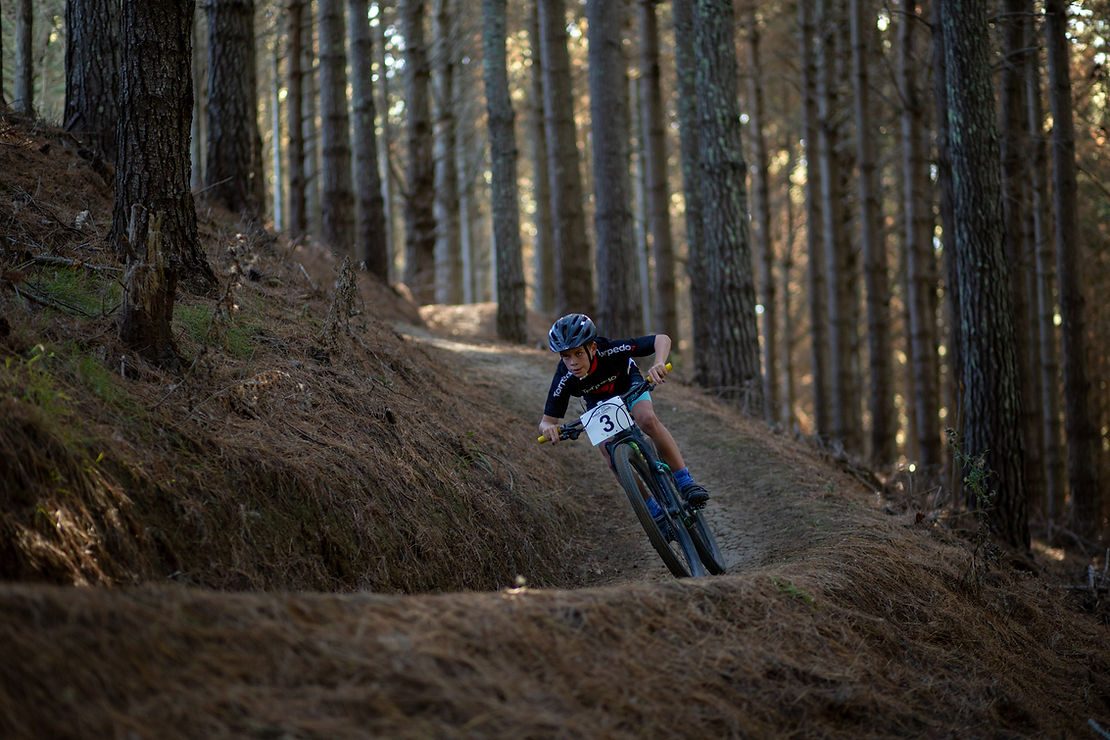
While the club was in discussions with Waikato District Council about acquiring some land to build on, the crew made up for the lack of local tracks with trips to Taupo, Rotorua and Te Miro, near Hamilton.
Dirk says it was a great way to start building a mountain bike community in Raglan, and to avoid losing momentum while the consent process was underway.
“After four years, we came to an agreement with the council for the club to lease a section of Wainui Reserve, a 140-hectare farm park giving access to Ngarunui Beach,” says Dirk. “As soon as the papers were signed, we were fundraising non-stop. Within a year, we’d commissioned Empire of Dirt to build a 6km loop network, spread over eight different trails.”
While 80% of the trails are Grade 3, there is one shorter and easier kids’ loop, as well a few grade 4, and a narrow but steep Grade 5 option.
Building Appetite
What might seem short and sweet to some is the perfect fuel for the mountain biking fire in Raglan, which faces the challenges of a fairly transient population and limited available terrain.
“Basically, what this small network has done is given us trails to call our own, and that in itself has helped pique interest in mountain biking and given people a solid reason to join the club – which supports our goal of building a larger trail network,” says Dirk.
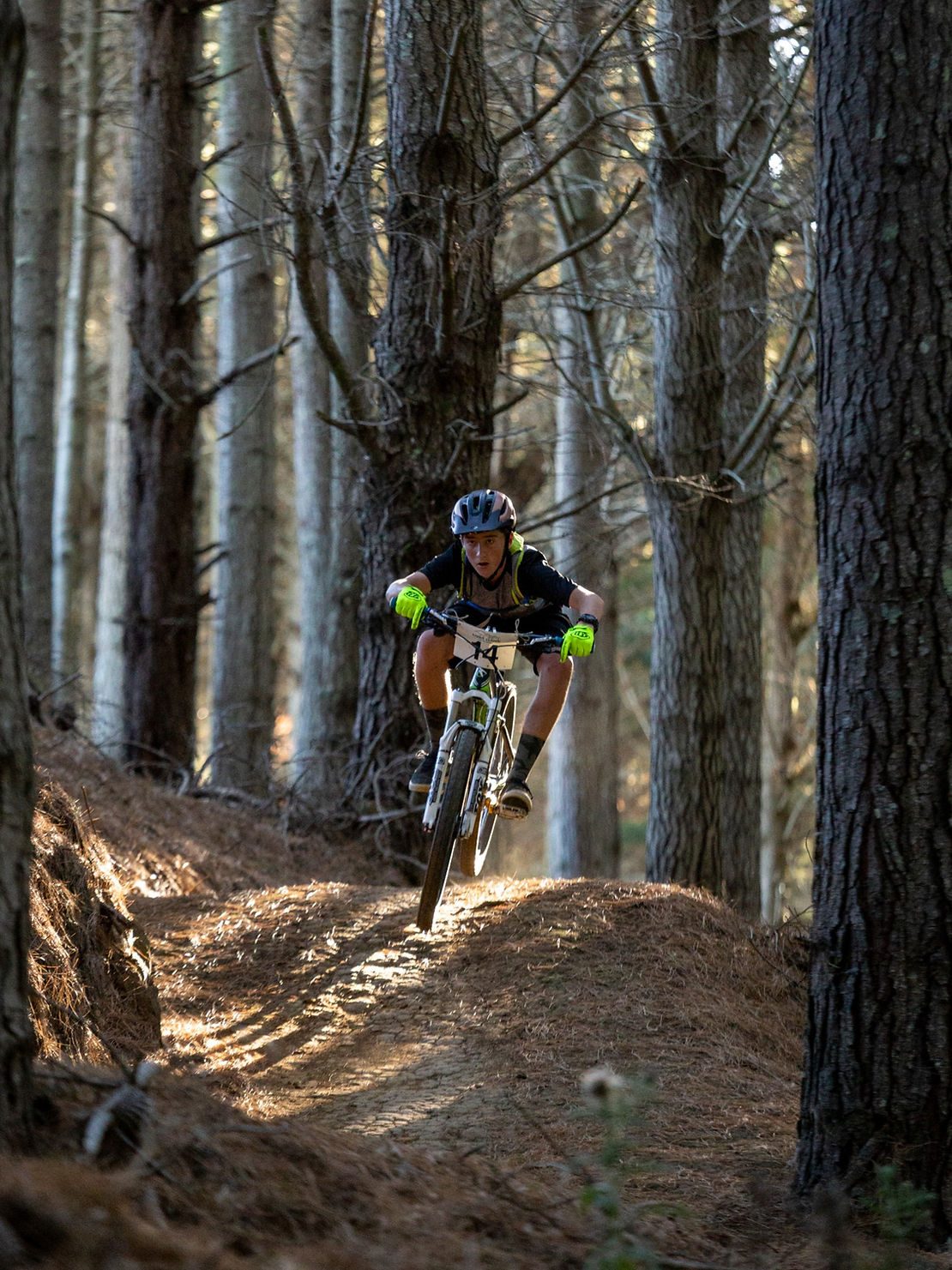
In exchange for the lease, the club is committed to maintaining the network. It hosts maintenance working bees a few times a year, and in between Dirk enjoys tidying up the trails.
“We have enough people to volunteer, but we didn’t have the right tools, so we applied to Trail Fund for funding to purchase two wheelbarrows and a weedeater to help with maintenance. It’s the first time we’ve applied to Trail Fund and we were thrilled to be successful in our application.”
With the new equipment, Dirk and a crew of volunteers were able to extend Grade 4 trail Tin Man Goes Down, and undertake maintenance on the entrance trail, which requires a lot of maintenance as it leads to a number of trails and is co-shared by horse riders.
To help drive more interest in the park, and generate more membership revenue for tools going forward, the club held an inaugural mountain bike race – The Twilight Challenge – in the park, earlier this year.
“We had a great turnout and everyone really enjoyed the trails, so we’re planning to make it an annual event,” says Dirk.
Nothing Happens Overnight
For others who feel stuck in a consenting process with their local government bodies, Dirk recommends persistence and patience.
“There were times when it felt like we were getting nowhere, which can be very frustrating, especially as a volunteer, but it was worth it in the end,” says Dirk. “It also helps to have a cycling-minded council person on your side, so make sure your members realise the influence local elections can have.”
Words: Meagan Robertson
Images: Ken Hansen
Story: Setting up a Workshop That Works for you
While it’s not every mountain biker’s favourite pastime, doing some at-home bike maintenance is part and parcel with the sport itself for a number of you. However, not having the right set up can really compromise the enjoyment you get from working on your bike, so this month we’ve put together a few tips on setting up a home workshop. On their own, these tips might not seem that important, but combined they can make a big difference.
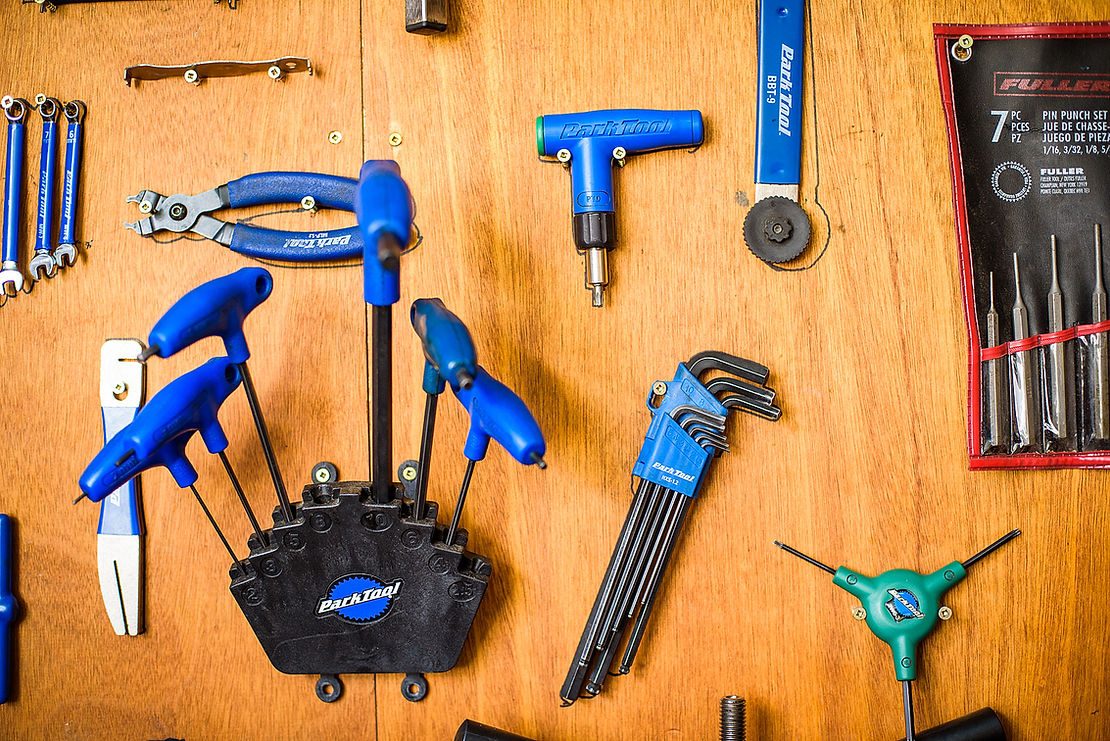
Step 1 – Identifying Your Space
Ideally your workshop would be located in a garage or shed, but not everyone has that luxury. If an indoor space is your only option, look for a tiled one if possible, as it’s hard to avoid getting anything on the floor. Ideally, the space should be big enough to be able to turn your bike around, so at least 2m x 2m.
Lighting is key to good workmanship and preserving your eyes. Natural light from a nearby window is optimal; however, it’s best to avoid direct sunlight if possible, or to be able to close the blinds when necessary.
If natural lighting isn’t possible, or when you’re working at night, you want to use fluorescent tubes or coil fluorescent energy lightbulbs. Try to avoid using sharp light because it casts heaps of shadows. Or, barring that, hang a good work/inspection light from the roof, as you want to be able to keep your hands free.
Ventilation is also important as a lot of the best cleaning products – even the ethical ones – are often quite smelly. Even if it doesn’t bother you, remember to consider others in your household – muddy mountain bikers often already have a bad rep in their households and there’s no need to encourage the perception!
You’ll need somewhere to store hazardous substances (such as kerosene/diesel for cleaning a chain). Most people use a container that they need to dump out. One concept that works well is to use an old freestanding laundry tub that can be used to clean parts in, with a catch bucket collecting the waste to be disposed of appropriately.
The bike also needs to have some mechanism to hold it upright. Using a bike stand is optimal if you decide to invest. If not, you need to find a way to hang your bike. One option is to strap your unused bike rack to the wall. See more details in set up section.
Step 2 – Stocking your Workshop
Once you’ve selected your spot, you need to start equipping the area with a number of essential tools and items. Here is a list of what we consider essential:
- A good stash of rags – old cotton or flannel clothes are best as they’re not linty anymore.
- Bike stand or bike holding mechanism. If you don’t have a bike stand, it helps if you have a wall that you can mount stuff against.
Essential Tools:
● Good floor/ track pump.
● Small torch to be used as an inspection light.
● Tyre levers.
● Multi tool with all the hex and torx keys your bike needs, plus chain breaker and screwdrivers. (most decent bike specific multi tools will have all these things)
● Bike-specific cable cutting pliers.
● Side cutting and long nose pliers.
● Cassette lock-ring tool.
● Chain whip.
● Mechanic’s pick (a sharpened spoke will work)
● Soft-faced hammer or mallet.
● Phillips and flat screwdrivers.
● Shock pump.
● Utility Knife.
● Spoke nipple wrenches.
● Bike hanging jig: Chains from ceiling/ towbar bike rack mounted to the wall.... there are many make do options.
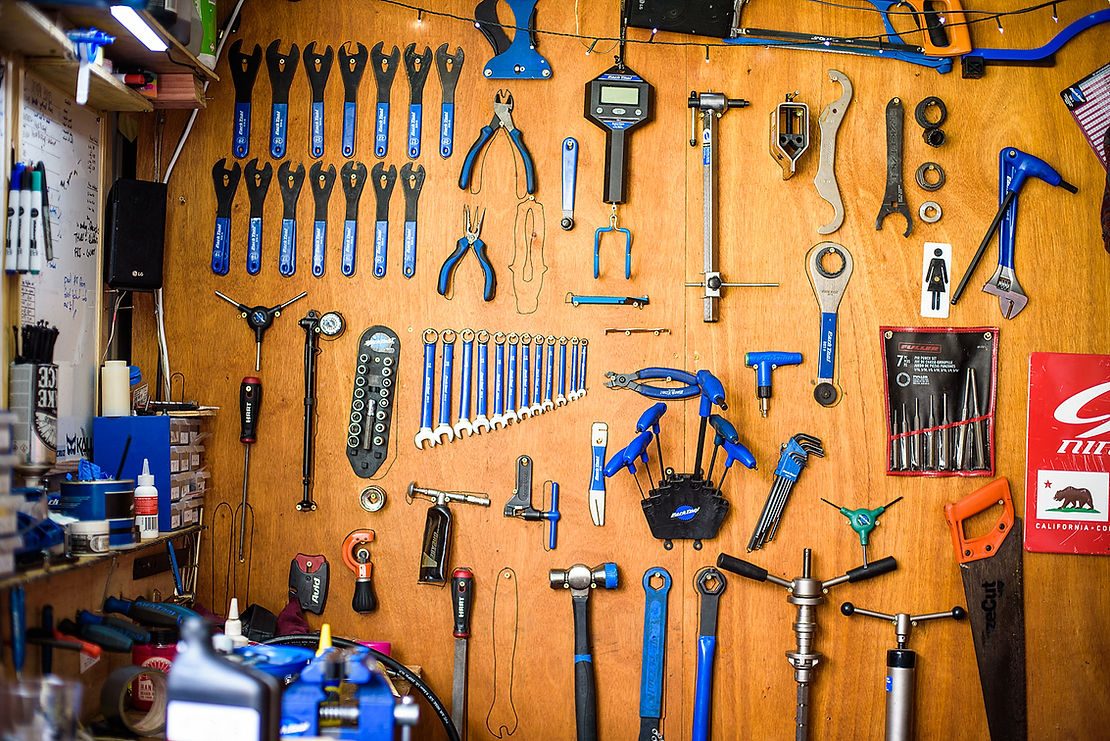
Great to have if you want to get really well setup:
● Good quality foldaway bike work stand.
● Solid work bench with engineer’s vice mounted to it.
● Air compressor.
● Good fluorescent tube lighting over work area.
● Chain joining link pliers.
Useful products and supplies:
● Zip ties.
● Electrical tape.
● General purpose bicycle grease.
● Wet and dry chain lubes.
● Spare chain joining links.
● Silicone spray.
● Residue-free brake cleaner spray.
● Water-soluble degreaser.
● Blue Loctite thread locker.
● Carbon grease if you have carbon bike parts.
● Workshop apron.
● Nitrile work gloves.
● Bucket and selection of bike specific cleaning brushes.
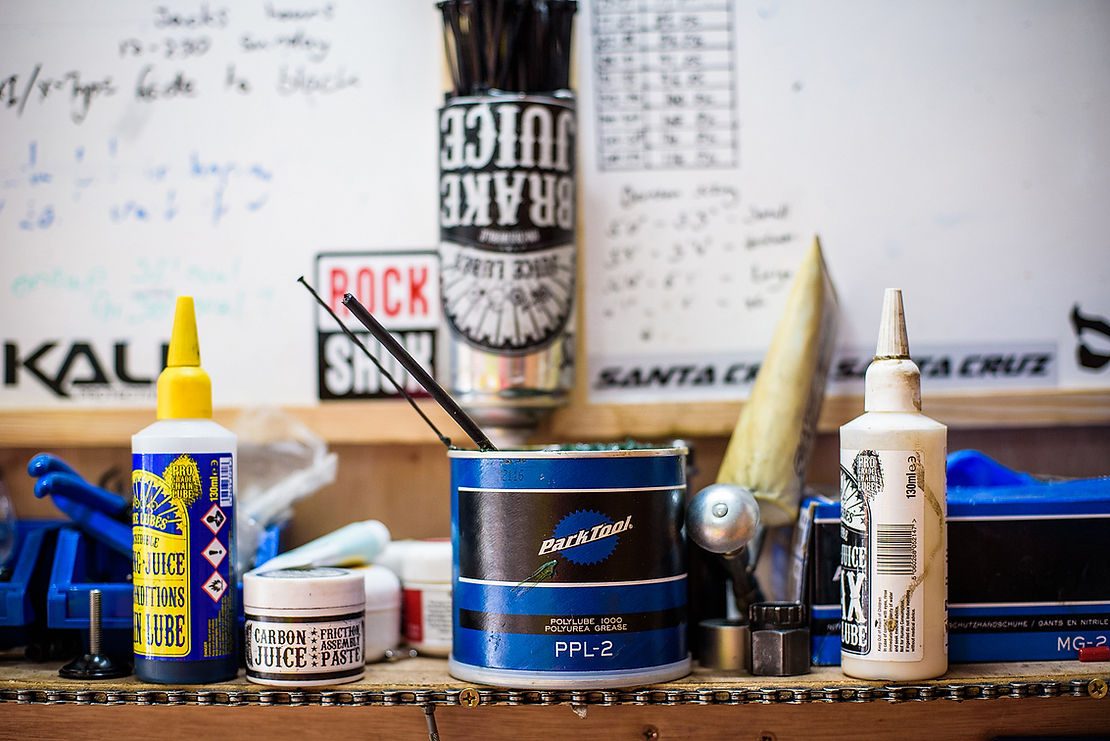
Step 3 – Setting it up
It’s worth stressing the importance of having your bike at work height, ideally somewhere steady that doesn’t swing. This can usually be achieved by using a work stand, which is a luxury, or a wall mounted bracket.
To enjoy the optimal bike set up, all your essential pieces of equipment should be within easy reach and have their own place. You should also have a piece of scrap carpet under the bike and where you’re standing – it’s less slippery and absorbs extra mess.
The most frequently used stuff should be in the easiest to reach positions, so you’ll need some sort of work bench top close to the bike to put things on while working. Use old cabinets if possible to keep stuff put away and use as a bench – an old kitchen cabinet with a bench top is optimal for this.
Words: James Duncan
Images: Digby Shaw
Story: Release the Hounds
With hands shielding the sun from our eyes, we scan the brown, barren emptiness of Hakatere Conservation Park. Several mountain ranges encircle us like we're in the centre of a gigantic crater. A light breeze carries the sound of barking, but the undulating landscape hides the culprit from view.
“Does he usually come back?” Adam asks, between sips from his water bottle.
"Usually," I sigh. We've not even left the car yet, and I've already managed to lose him. I clamber onto the roof and shout his name. In the distance, I can see a black blur chase several birds that soar high above. “Don’t worry, I can see him.”
Adam squints as if he's on safari trying to spot a wild animal across the savanna-like wilderness. “Is he coming back?”
My arms fall to my side. “…doesn’t look like it.”
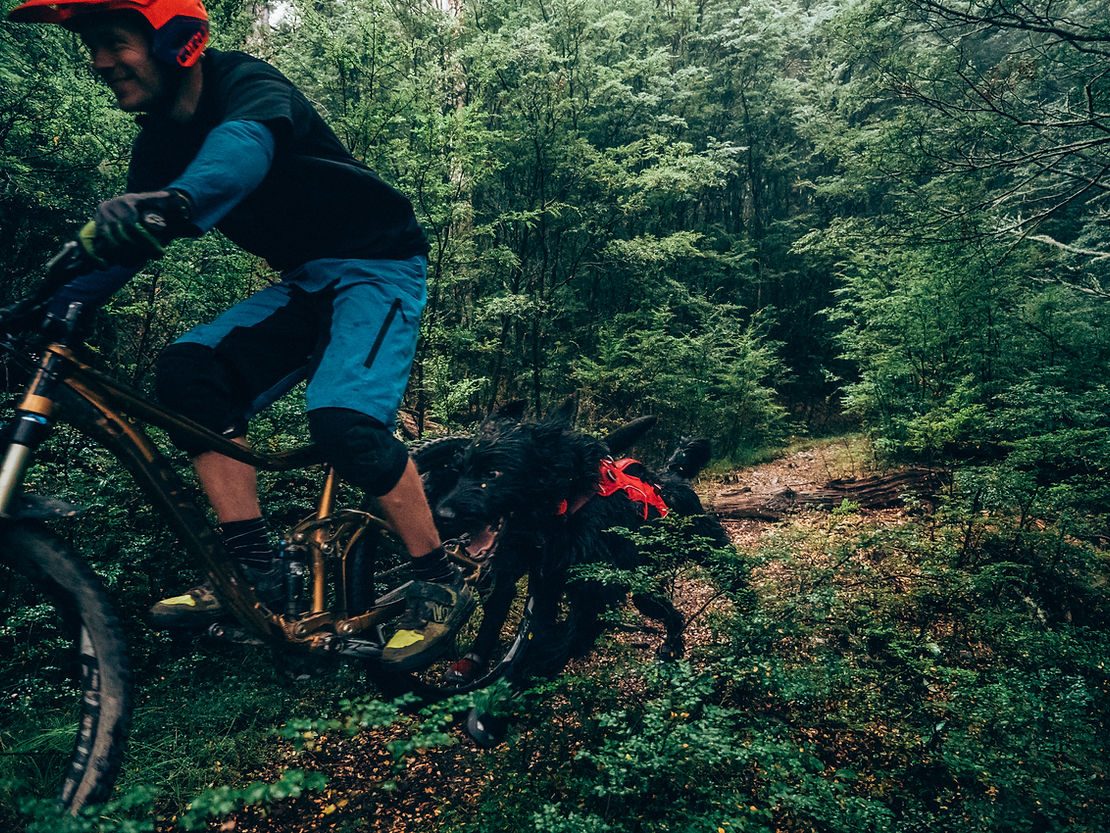
Up until three years ago, I’d never owned or spent much time around dogs. I didn't grow up with one in the family and was generally indifferent to the four-legged, tail wagging species. So when my partner suggested we get a puppy, I was finally swayed by the possibility of having a trail dog. I’d seen plenty of riders out on the tracks with well-mannered, obedient canines at their side, and it seemed an ideal way to combine the chore of dog walking with the joy of mountain biking. Training can’t be that difficult? Sit, stay, sick balls – easy. As I watched my not-so-faithful companion disappear over the Hakatere horizon, it appeared there was still a bit of work to do.
A Bikers Best Friend?
On paper, a trail dog should be your favourite riding partner. They won't cancel when it looks like rain; they'll never struggle through a hangover during a weekend jaunt, and their infectious energy can power you up the worst of climbs. However, something I had failed to consider when observing other trail dogs out on the local tracks was that I was witnessing the finished product. It can take months – even years – of training to get a canine to a point where they are trustworthy and capable enough to be taken out for a few laps.
Before we’d even got our dog Oshy near a bike, we had noticed a few of his quirky traits. Some of which lent themselves to the possibility of trail dog material, others… not so much. His breed is a cross between Border Collie and Huntaway. Which I appreciate doesn’t mean a great deal to non-dog people. Put simply, both varieties are energetic and bred to herd livestock, with Collies being the brains, i.e. able to follow commands, and Huntaways being the muscle, i.e. barks a lot.
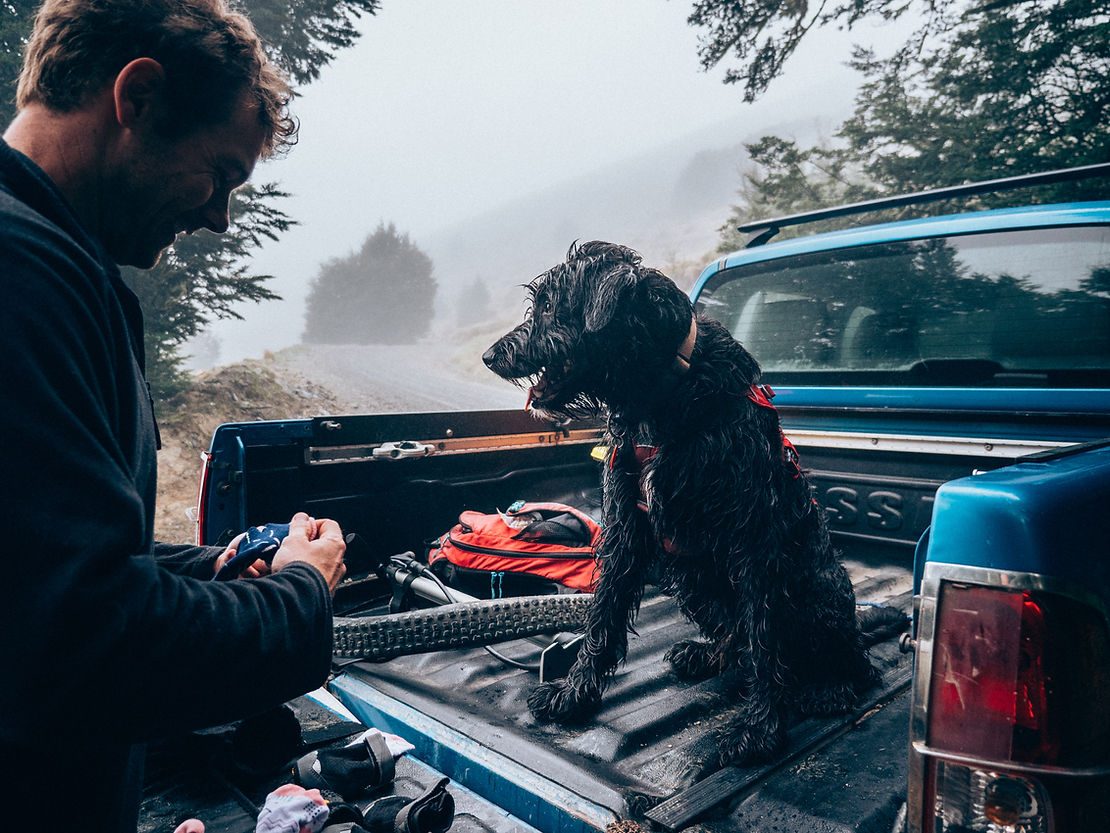
Understanding the breed and body type of your potential trail dog is important as it can dictate how they will cope when joining you for a ride.
“Generally speaking, larger dogs with long legs and long snouts are ideal,” explains Lisa Sturm, a trainer at Sit Happens, Dog Training Christchurch. “But that doesn’t include Greyhounds, as although they may appear light and quick on their paws, they have been bred for short, high-intensity exercise.”
Before we had consulted with Lisa, we’d helplessly watched Oshy chase seagulls for over an hour at the beach, so we knew his stamina was up to it. She recommended working on his control around chasing things first, before taking him out with the bike. Once that was sorted, Lisa suggested starting small and somewhere quiet for the inaugural ride, which is how we came to be in Hakatere Conservation Park.
Take One
Hakatere lies within the depths of Canterbury, and although not famous for mountain biking, it is remote. I’d plotted a course to the tantalisingly named Mystery Lake. The route followed an uneventful 4WD track in and returned via a surprisingly fun section of the famed Te Araroa walking trail.
Before we released the hound, we laid a short trail of dog biscuits for him to seek out and enjoy, helping to focus him before the ride. We made the mistake of leaving him to it while we sorted the bikes out, and once the biscuits were done, he unfortunately moved his attention back to the birds again.
Eventually we regrouped and set off, and it was only a matter of time before another mistake became evident. What I hadn’t fully taken into consideration was the distance. It was upwards of 30 kilometres, and we were out for far longer than planned. Before we'd even made it back to the car, Oshy was starting to stiffen up. He spent the following few days on his bed, staring at me with accusatory eyes.
Once the guilt had subsided, I began pouring over Topo-maps and DOC information, searching for suitable places for a second attempt. Then the obvious occurred to me - Craigieburn. Those that have ridden there will be familiar with the selection of soft, loamy trails and spectacular views it offers. With it being relatively quiet and full of shorter 10 km loops, it was an ideal location.
I was also keen to try some new commands we’d been working on, such as ‘Behind,’ ‘Wait,’ and ‘Let’s Go.' I'd practised them while riding around the front garden, tossing out treats like confetti at a wedding when Oshy got it right.
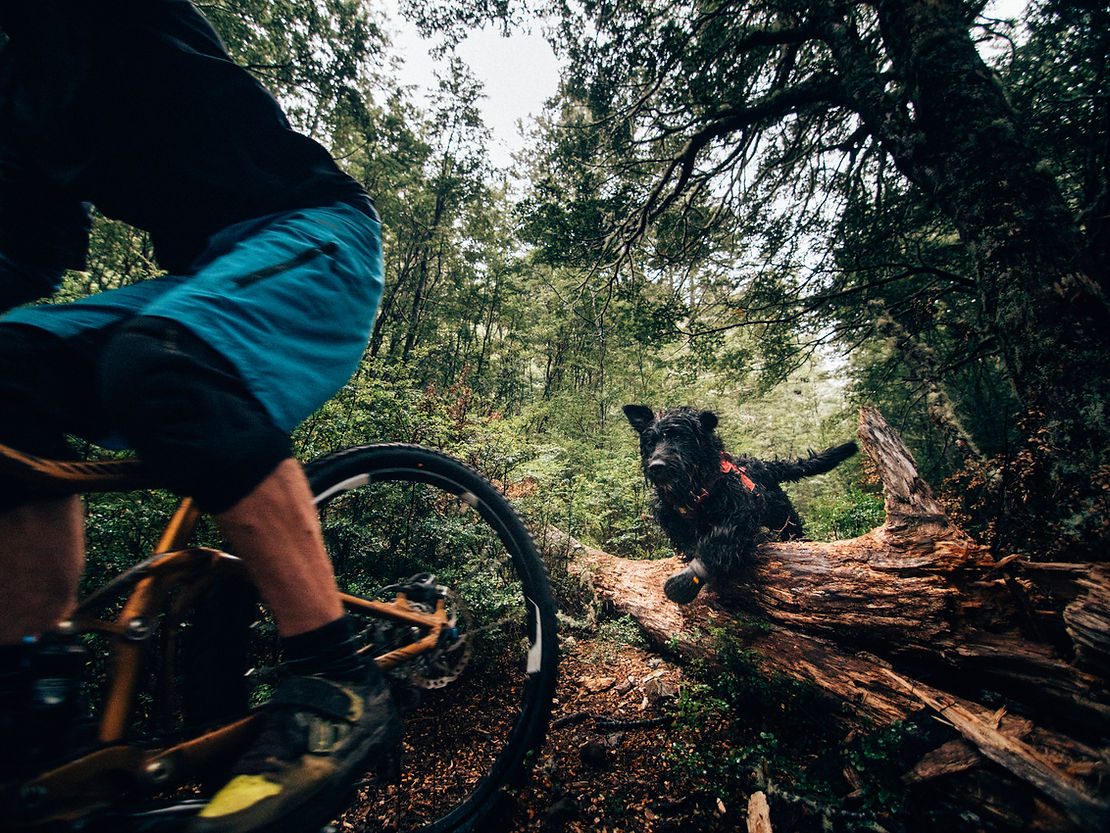
Take Two
On a crisp, bluebird day we slogged our way up the meandering Craigieburn access road to the base of the ski field. Sat at the start of a trail called The Edge, we both took a moment to enjoy the fresh alpine air and scenic views, before embarking – excuse the pun – on the track. This time the distance was right, and the commands worked suspiciously well, with Oshy waiting for the order to start, and staying behind the bike when instructed.
The Craigieburn trails are mostly through native forest, which provides welcoming shade, and we stopped at the many streams that trickle down the mountainsides so Oshy could keep hydrated. An important aspect to be aware of as you're freewheeling down your favourite trail is that dogs can't cruise, and can, therefore, be susceptible to over-heating.
Unfortunately, what I hadn’t taken into consideration was the trail surface. It's called The Edge for a good reason - sections of it traverse over steep scree slopes. As well as being a bit sketchy in places, it didn’t do any favours for Oshy’s paws while he dashed over the jagged shingle. During the drive home I heard a constant licking noise, and on closer inspection, it appeared that he had torn his pad. Another wave of guilt washed over me. There was only one thing for it; it was time to go shopping.
Retail Therapy
“First and foremost, I’d recommended a set of booties,” Rocky suggested, holding up a pair of adorable dog shoes. Oshy and I were in FurtherFaster, an outdoor store in Christchurch, which has a whole section dedicated to arming your canine for adventure. There are collapsible water bowls, dog-specific first aid kits and all-weather dog coats.
As we measured up Oshy for some new boots, Rocky told me about Badger, their three-year-old Labradoodle. The large, shaggy dog bears an uncanny resemblance to Oshy, except instead of barking there is a continuous desire to chase toys.
“These days he’s more of a trail running dog,” Rocky says as we measure up Oshy’s paws, “due to the requirement for dogs to be on leashes when up on the Port Hills.”
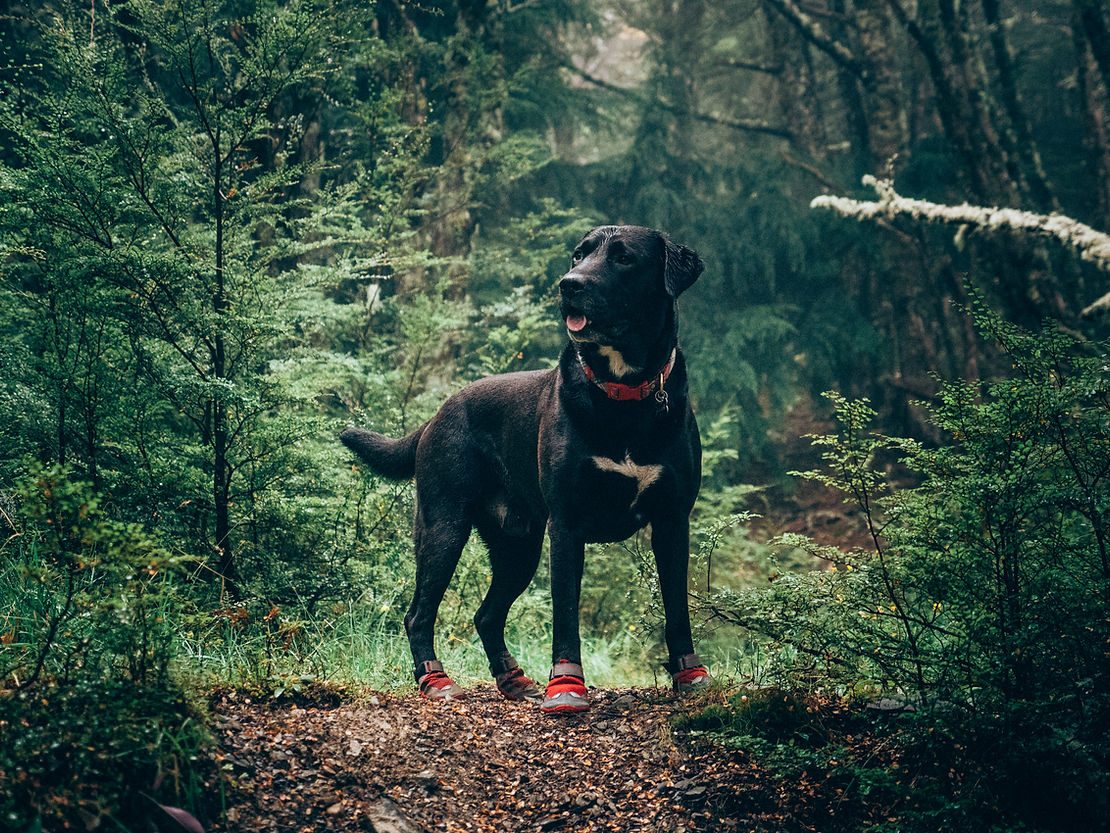
It’s a bad idea to have your dog tethered to your bike as it can lead to all kinds of accidents. If you’re worried about your dog running off, or want to train them to run next to the bike, there are devices available. An example is the ‘Walky Dog Plus’ which safely attaches the dog's leash to the seat post, but bear in mind that it’s only suitable for wider trails.
With the boots fitted, my attention shifted to the selection of dog bags that can turn your pooch into something resembling a pack horse. The contents of my bike rucksack were evolving, and I was now hauling around biodegradable poo bags, a whistle, a leash and about a kilos worth of dog biscuits. Seeing as dogs can carry about 10% of their body weight, the thought of delegating some provisions to Oshy seemed an attractive one – especially as he never chips in for petrol.
At the counter, I asked if Rocky had any final advice. “Start small and somewhere quiet, and take plenty of water.” He then added with a grin, "and make sure you enjoy yourselves.”
Take Three
For the next attempt, I decided to bring some moral support. For anyone who has biked around Victoria Park in Christchurch, or been along to the dig days, they may be familiar with Frank (the Tank). A well-mannered, five-year-old Labrador-Border Collie cross. he can often be spotted taking sneaky hotlines and shortcuts as he races his trail buddies, Todd and Agata, through the steep and twisty downhill trails of the park.
I had hoped that the calm and collected presence of Frank, who has several years of trail running experience under his collar, would have rubbed off on Oshy, but alas. During a drizzly Saturday morning at Craigieburn, the sound of barking could be heard echoing through the mountains.
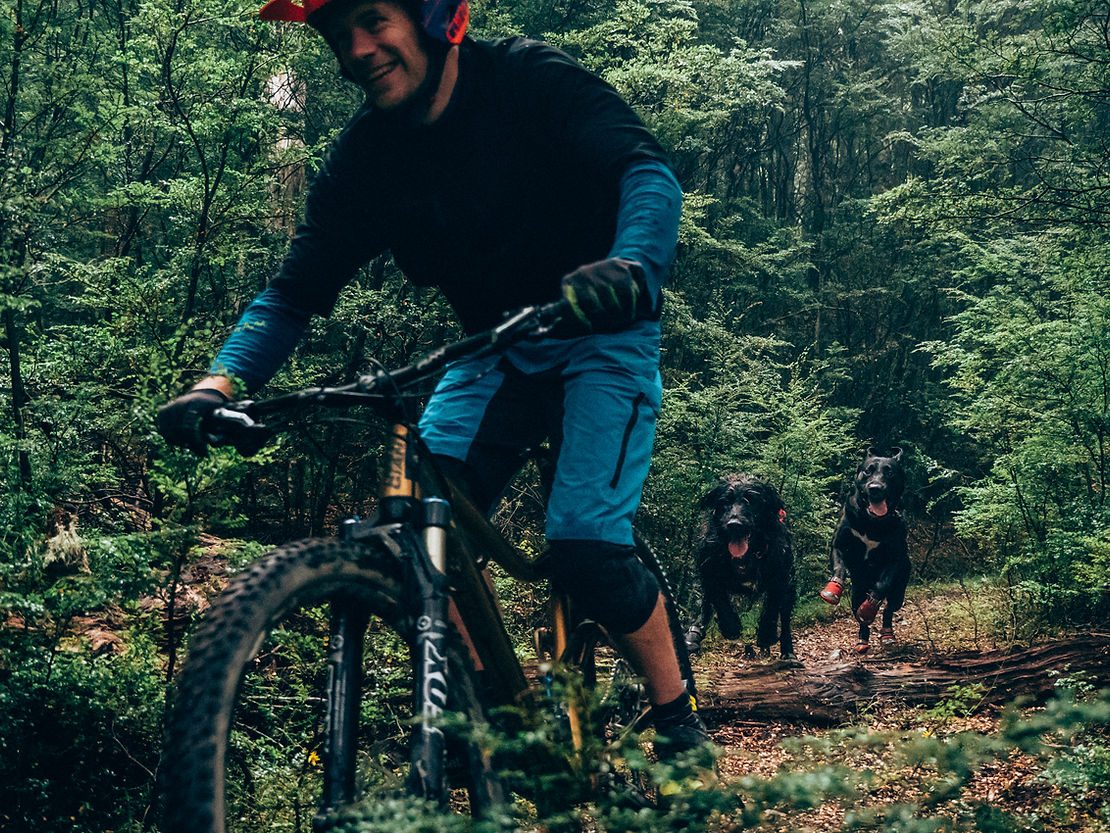
What I hadn’t taken into consideration this time was Oshy’s excitement at another trail dog and new riders. Sadly, he expressed this emotion the only way he knows how – barking. No amount of biscuits, polite requests to cease and desist or ‘time outs' in the car seemed to have an effect. After just two runs we had to call it a day. Something I’ve come to realise with Oshy is that if it's not working then don't force it. Similar to those rides where you have endless mechanicals or repeated crashes, it's best to just draw a line under it.
Through a rain covered windscreen I watched Todd and Agata set off for another lap, with Frank bounding happily – and silently – after them. I rolled my eyes and wondered why I bother. I turned to face Oshy and was greeted with a large pink tongue trying to clean my mud covered face. He then sat back with a huge grin across his chops, giving me the only reason I needed.
Words: Ian Middleton
Images: The Perfect Line

